Changes are on the way to a piece of Alexander Hamilton’s familial legacy. On Tuesday, the Landmarks Preservation Commission approved work to be done at the Hamilton-Holly House. However, the changes won’t be exactly what was proposed, particularly on the house’s rear.
Located at 4 St. Mark’s Place, between Third and Second avenues in the East Village, the three-and-a-half-story Federal style home was built in 1831. English-born real estate developer Thomas E. Davis built it, but it’s who lived there that makes it significant.
In 1833, it was sold to Col. Alexander Hamilton, Jr., son of first Secretary of the Treasury (not the son who also died in a duel). Of course, Secretary Hamilton’s life and death is now the subject of the hit Broadway show Hamilton: An American Musical. As for the house, it served as home to Elizabeth Schuyler Hamilton, the elder’s widow, as well as their daughter Eliza Hamilton Holly and her husband Sidney, plus the junior Hamilton and his wife. The Hamiltons owned it until 1843, when the oil and candle merchants of the Van Wyck family purchased it.
Eventually, changes, including the removal of the first floor curved balcony, as well as commercial interventions, were undertaken. Additionally, a non-conforming rear addition was constructed, to allow for a meeting hall. It later served as several theaters. It was designated an individual landmark in 2004 and is now configured for commercial space on the basement and first floors and residential units above.
The renovation plan comes from Park Place-based SWA Architecture. It calls for the same basic setup, but with more residential units. The aforementioned rear addition would be demolished, and a new one constructed, that would result in the removal of the historic rear dormers and make the building five stories tall. Not all of the floors would line up front-to-back.
On the front of the structure, a largely new entryway would be installed, the gate at the stoop would be removed, new windows would be installed, and the grand curved balcony would be reconstructed at the first floor. The secondary stair from the ground to the first floor would be removed and a new small gate put in its place at ground level, an additional window would be added to the basement level, an existing basement door would be replaced with a window, an agree under the front steps would be reopened, and signage would be installed. The existing fire escapes would remain. The façade would also receive an overall restoration.
“As HDC often testifies, Federal townhouses are rare and treasured examples of Manhattan’s early dwellings that should be respected, not mutilated,” testified the Historic Districts Council’s Barbara Zay. “The removal of the house’s roof and rear, including its dormer windows, which provide important evidence of the Federal style and the house’s date of construction, would severely compromise its integrity. Our committee, however, found the alteration to the storefront to be acceptable.”
“The Hamilton-Holly House is one of the rare, extant, largely intact Federal style row houses in New York City. While GVSHP appreciates the proposed restoration of much of the façade, there are other elements in the proposal which lack authenticity and therefore are inappropriate,” testified Sarah Bean Apmann of the Greenwich Village Society for Historic Preservation. “Built in 1831, this house was part of the row of Federal houses on this street between Second and Third Avenues built by Thomas E. Davis when this was one of the most fashionable areas to live in Manhattan. The survival of this rare house is remarkable in its own right but what is even more remarkable is the survival of its pitched roof with front and rear dormers. The rear addition should be reduced in height so that the roof and rear dormers may remain intact.
“Another element in the proposal which is troublesome is the addition of a small window between the larger windows at the basement level. This element has no historic precedent, and interrupts the original fenestration. Finally, at the parlor level, the proposed addition of a store door on the west side and the metal sign mar the historic and architectural integrity of this house. The same care and authentic approach used in the upper floors should be exercised here and at the basement level.”
Manhattan Community Board 3 approved of the façade work, but not the new configuration of the rear.
The commissioners were okay with most of the proposal, but not the fifth floor, because it would knock out the rear dormers. Nor did they like the new window at the basement level. They also had issues with the signage proposed for the front. In the end, they approved the proposal, but with the elimination of the new fifth floor and the new basement window. Without that additional floor, there might be a reduction in residential unit count. The applicant will also work with the LPC staff on the signage.
View the full presentation files here:
Subscribe to YIMBY’s daily e-mail
Follow YIMBYgram for real-time photo updates
Like YIMBY on Facebook
Follow YIMBY’s Twitter for the latest in YIMBYnews


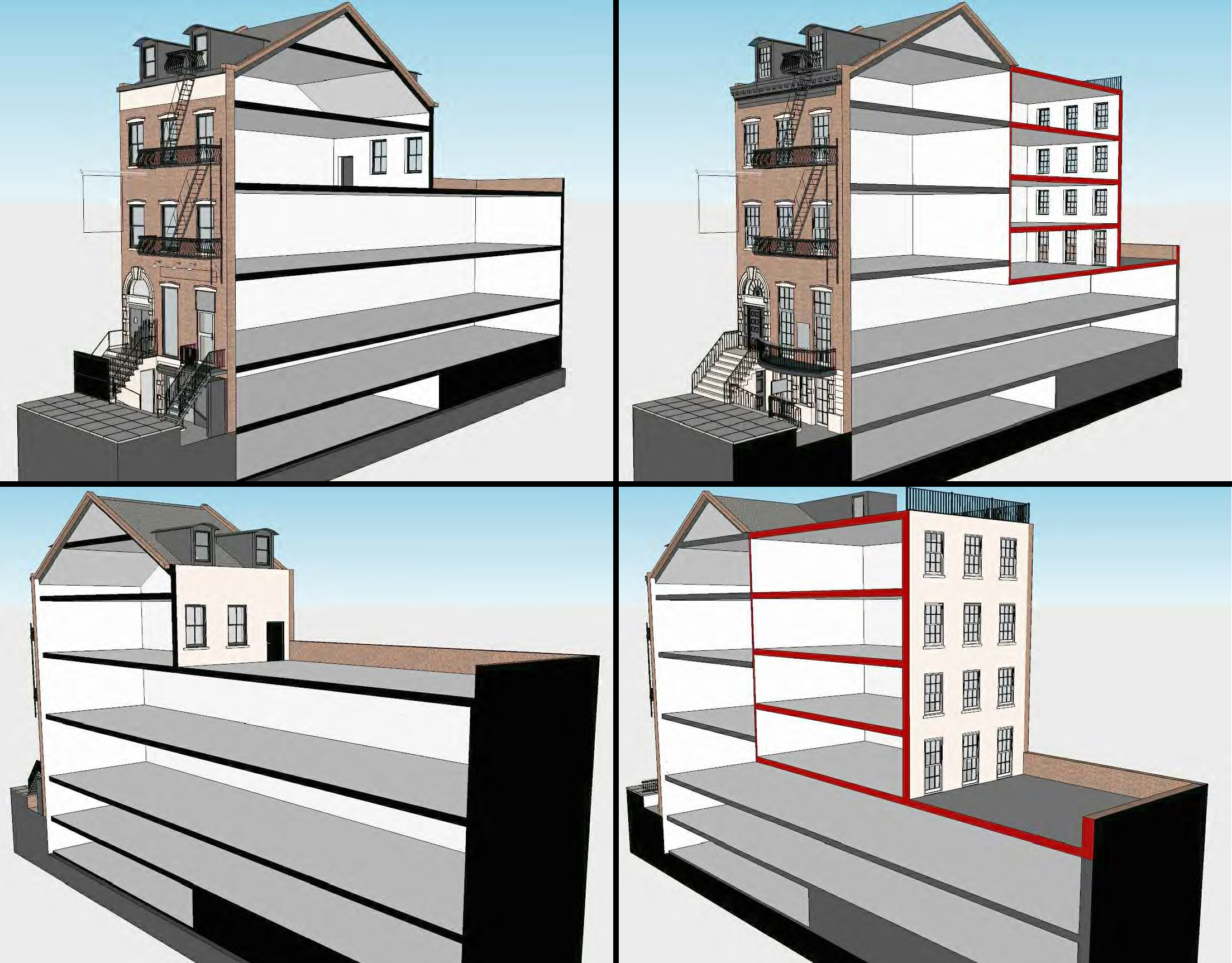
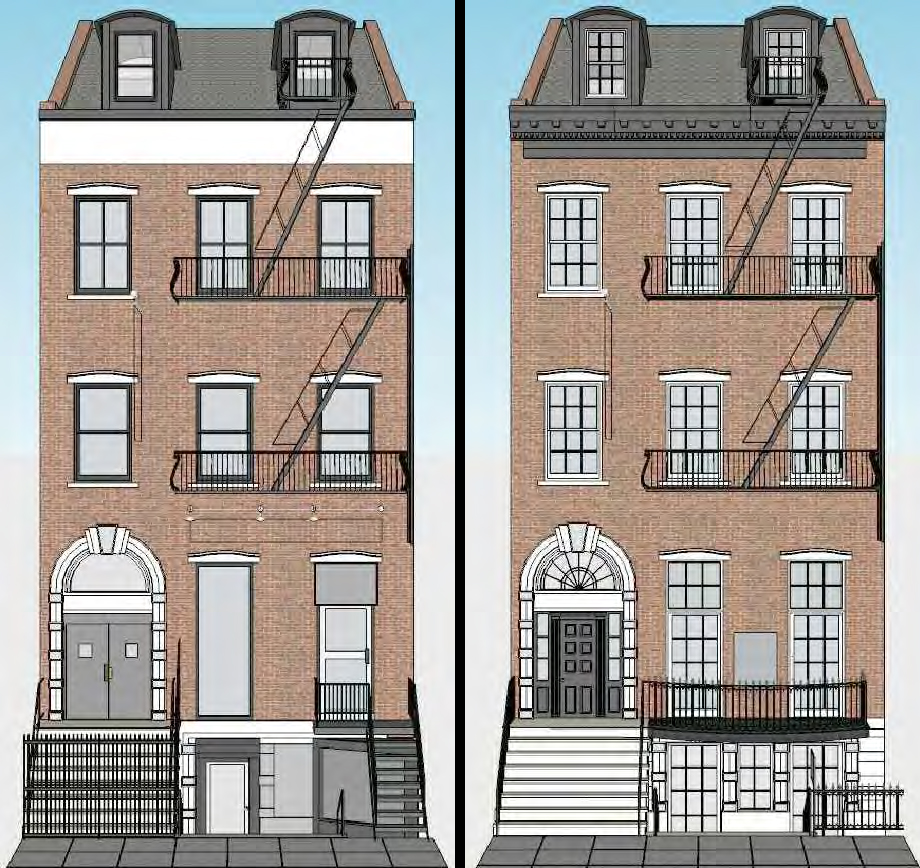


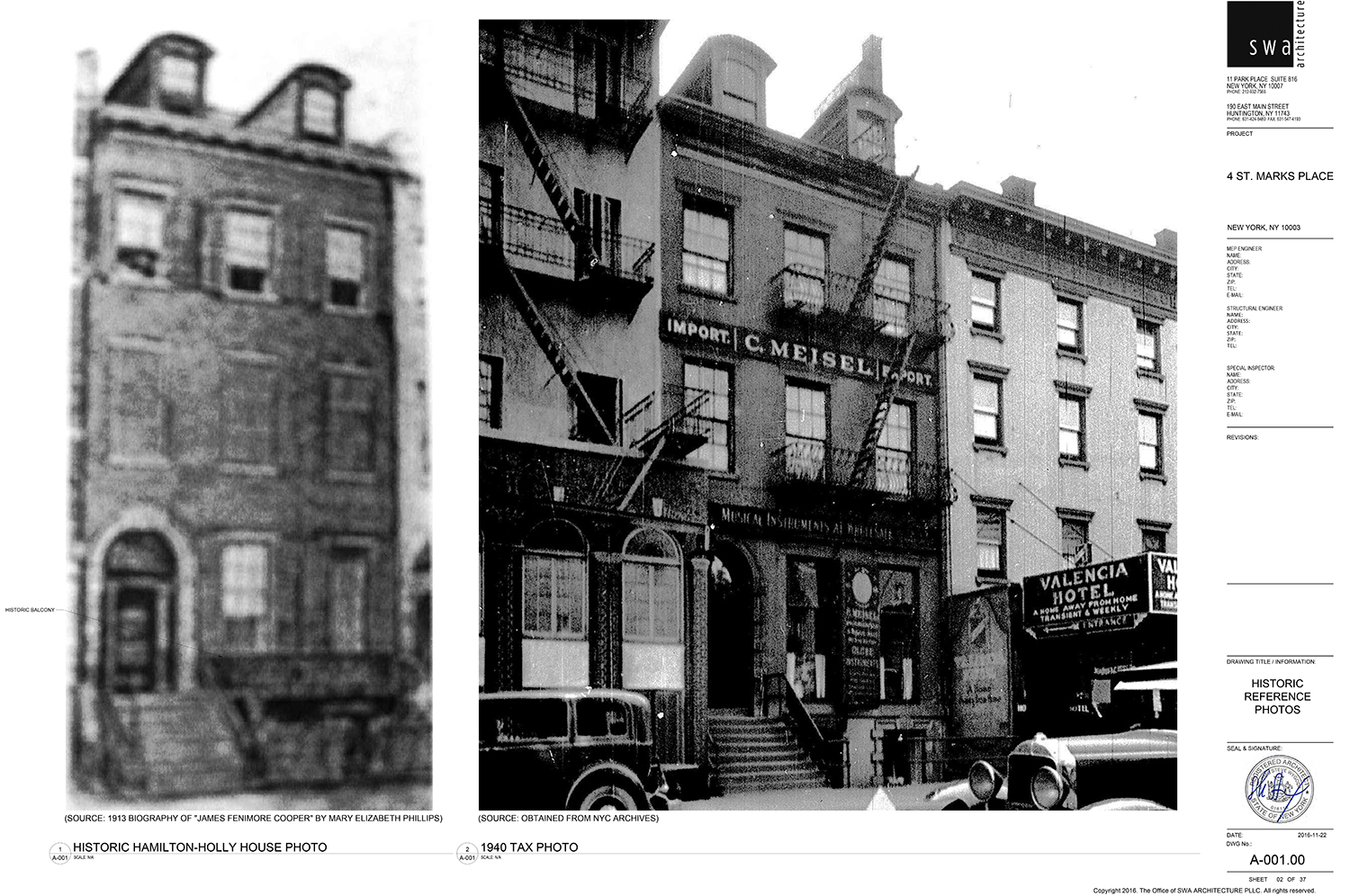
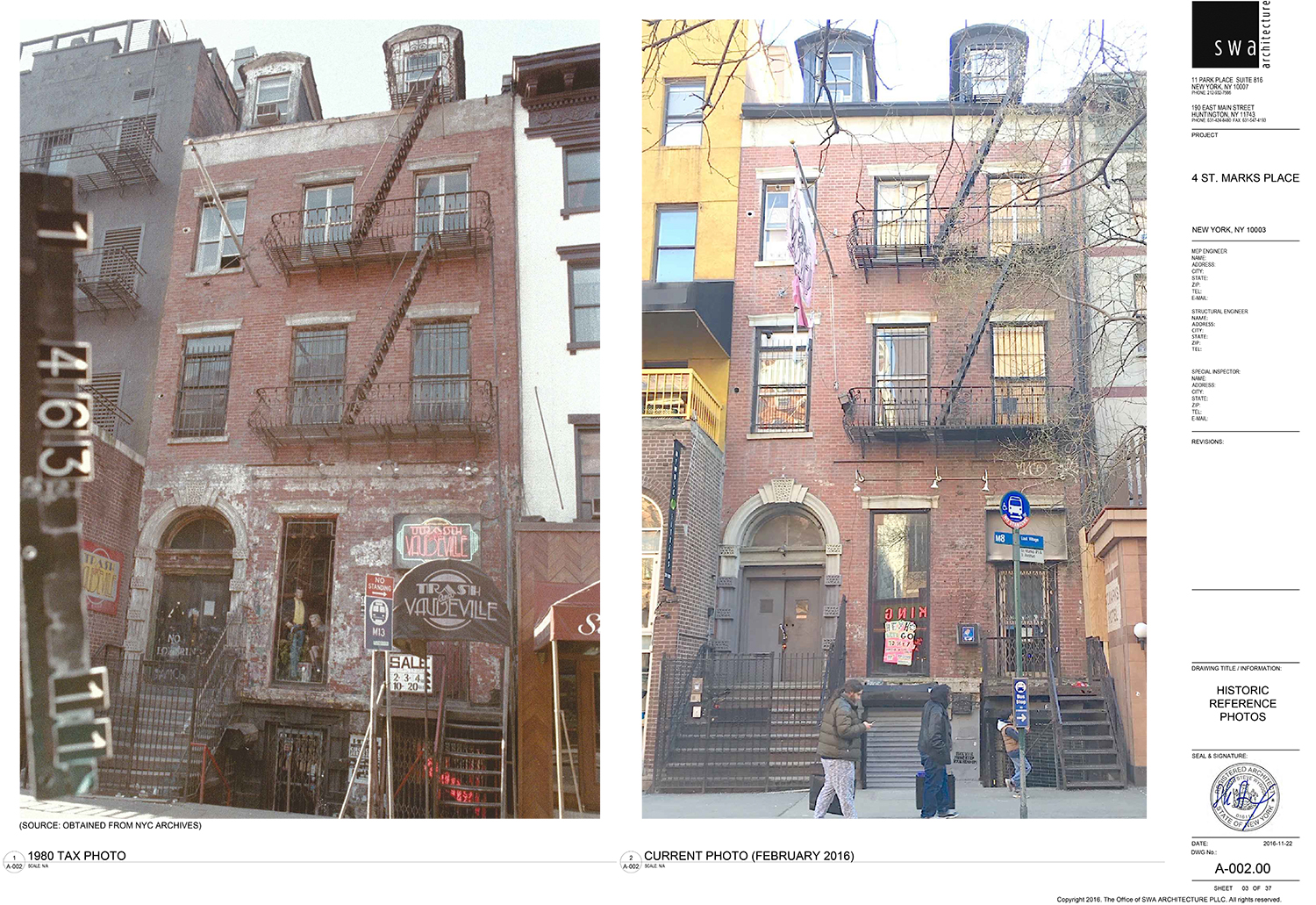
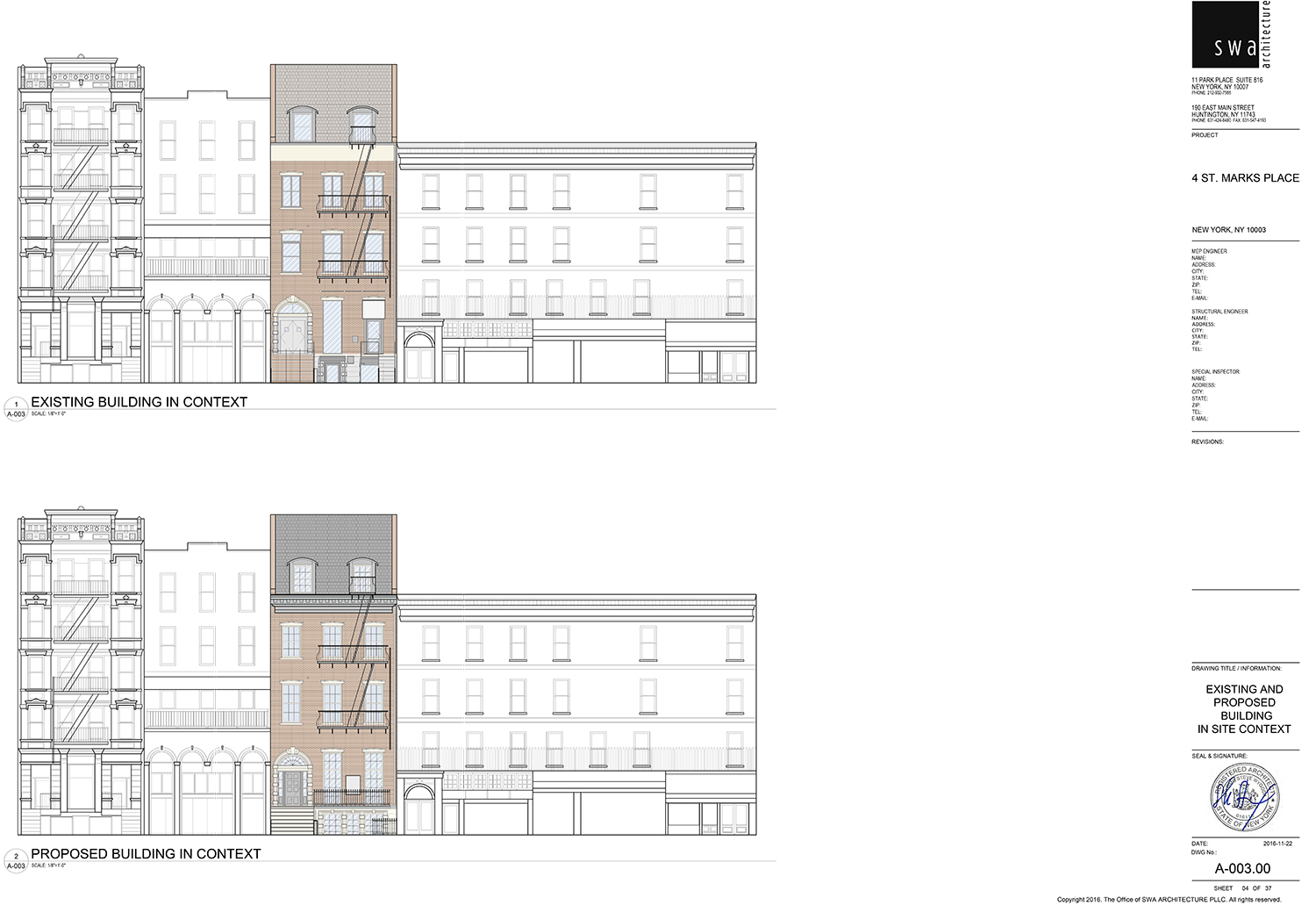
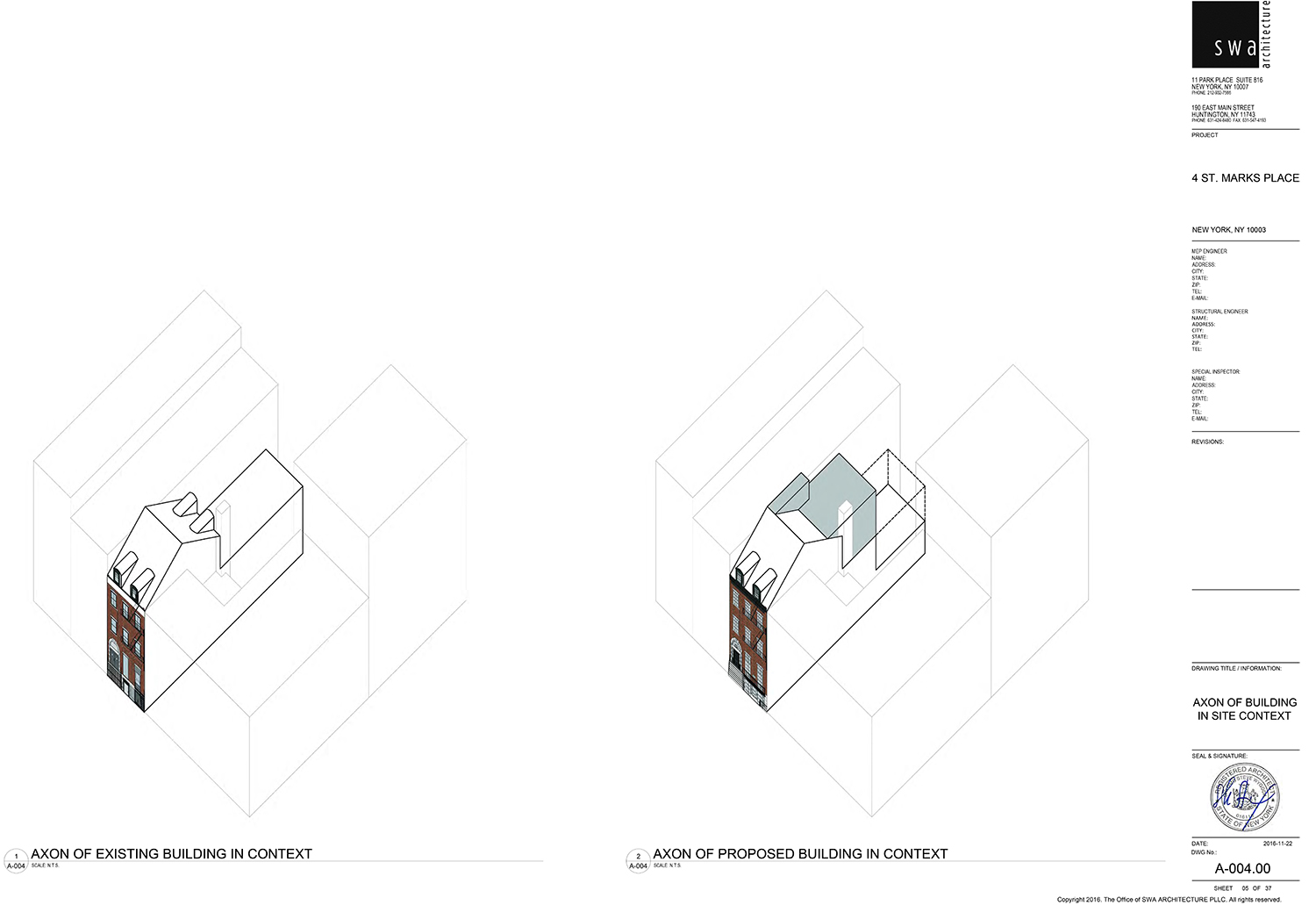
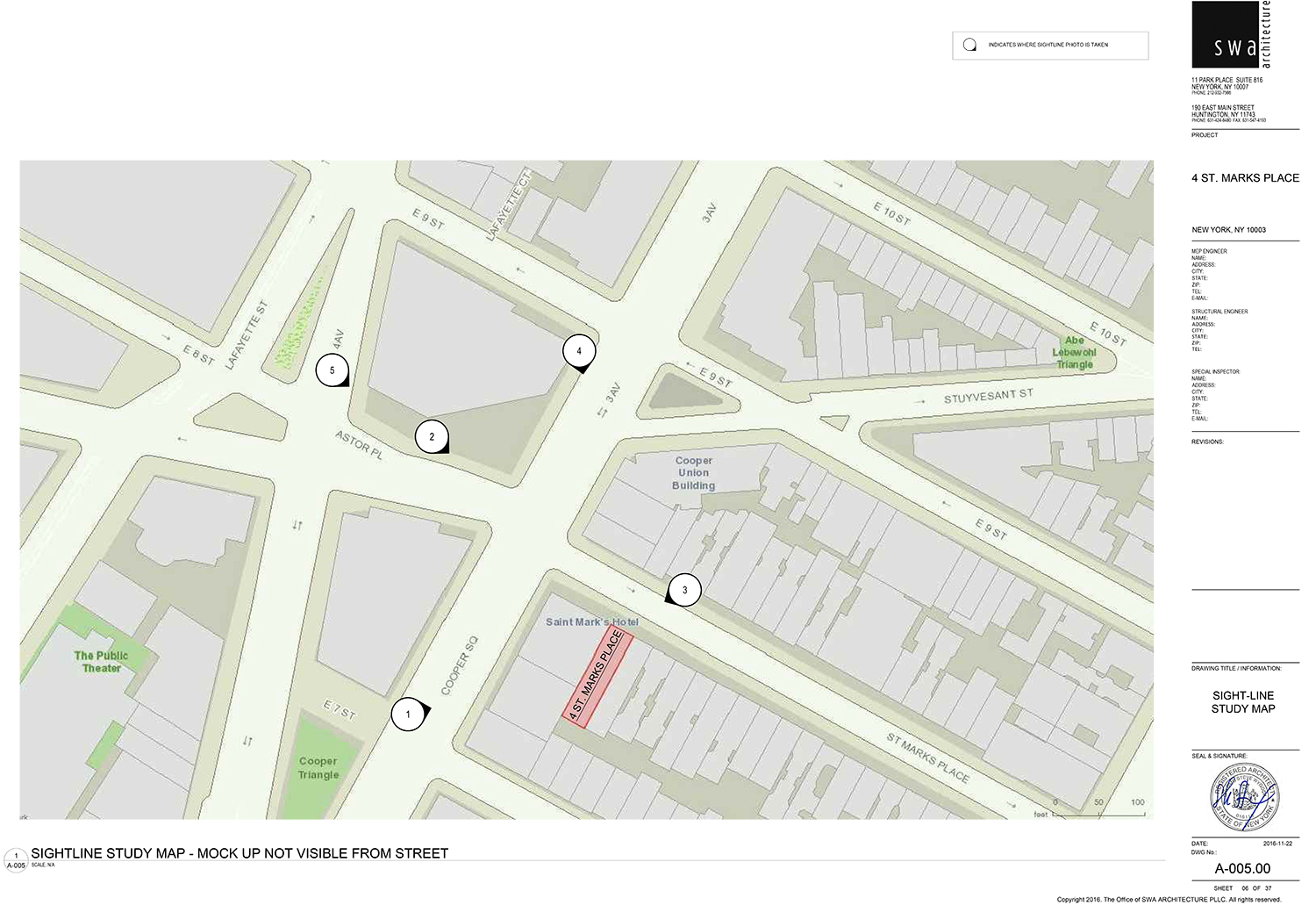
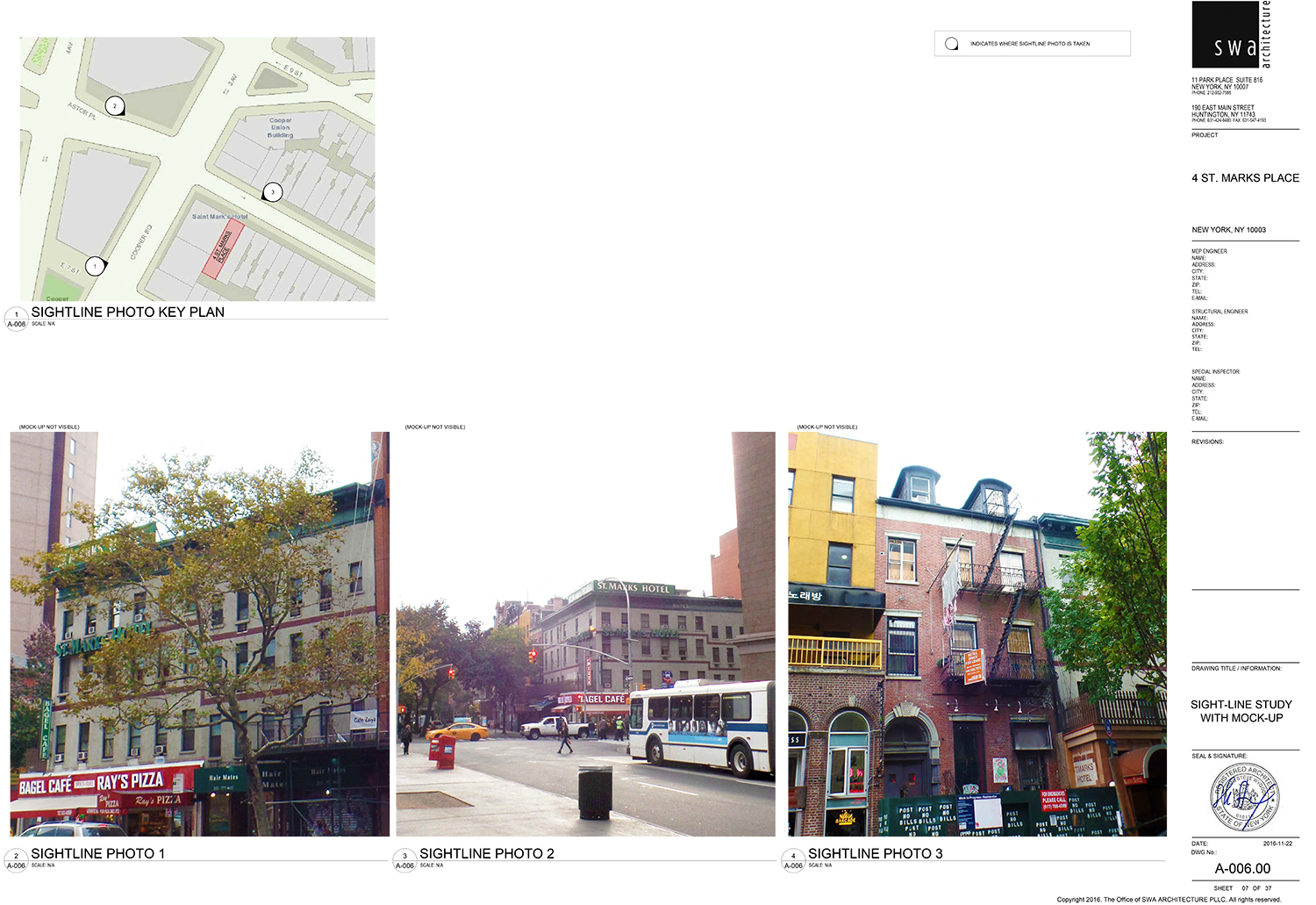
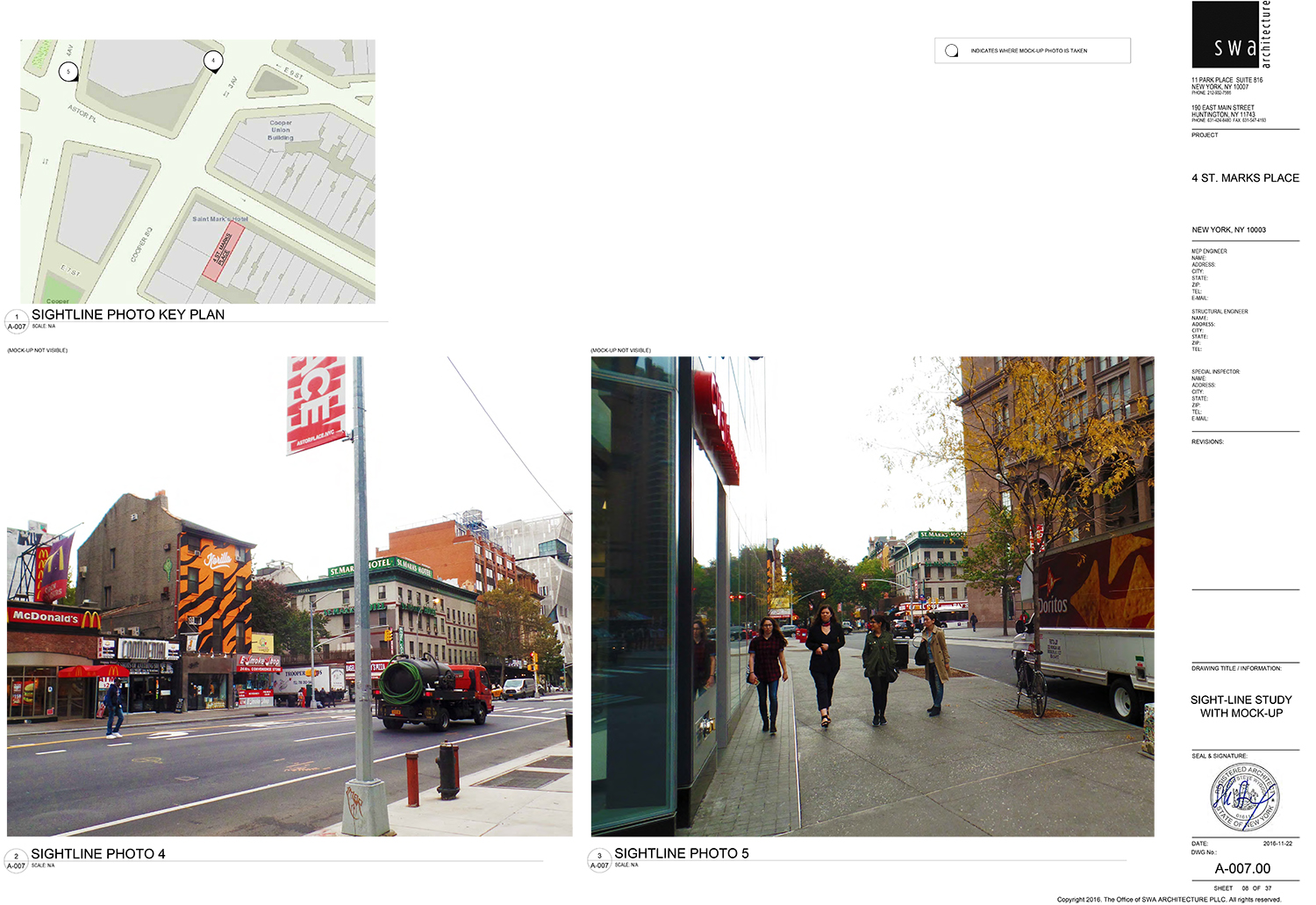
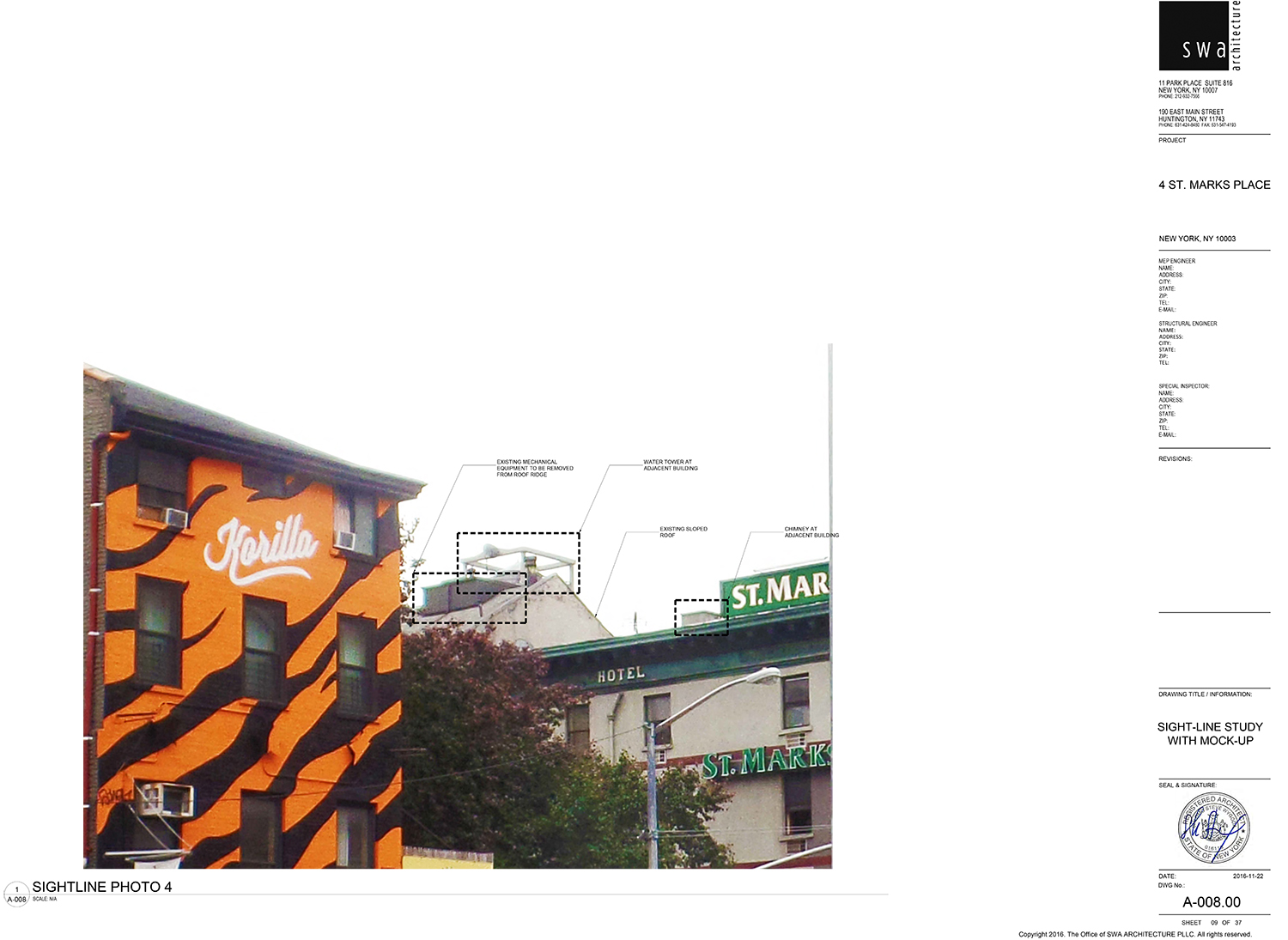
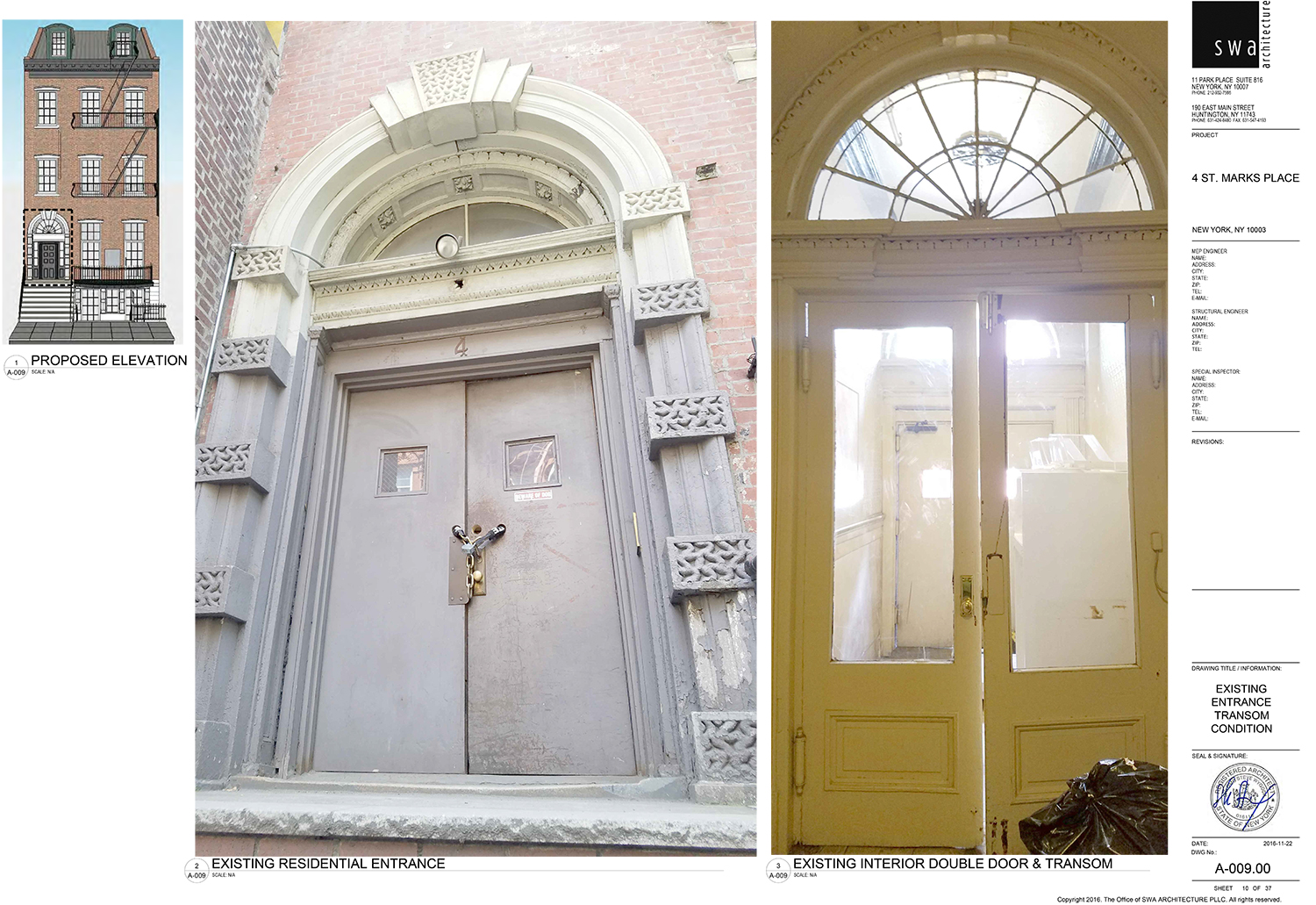

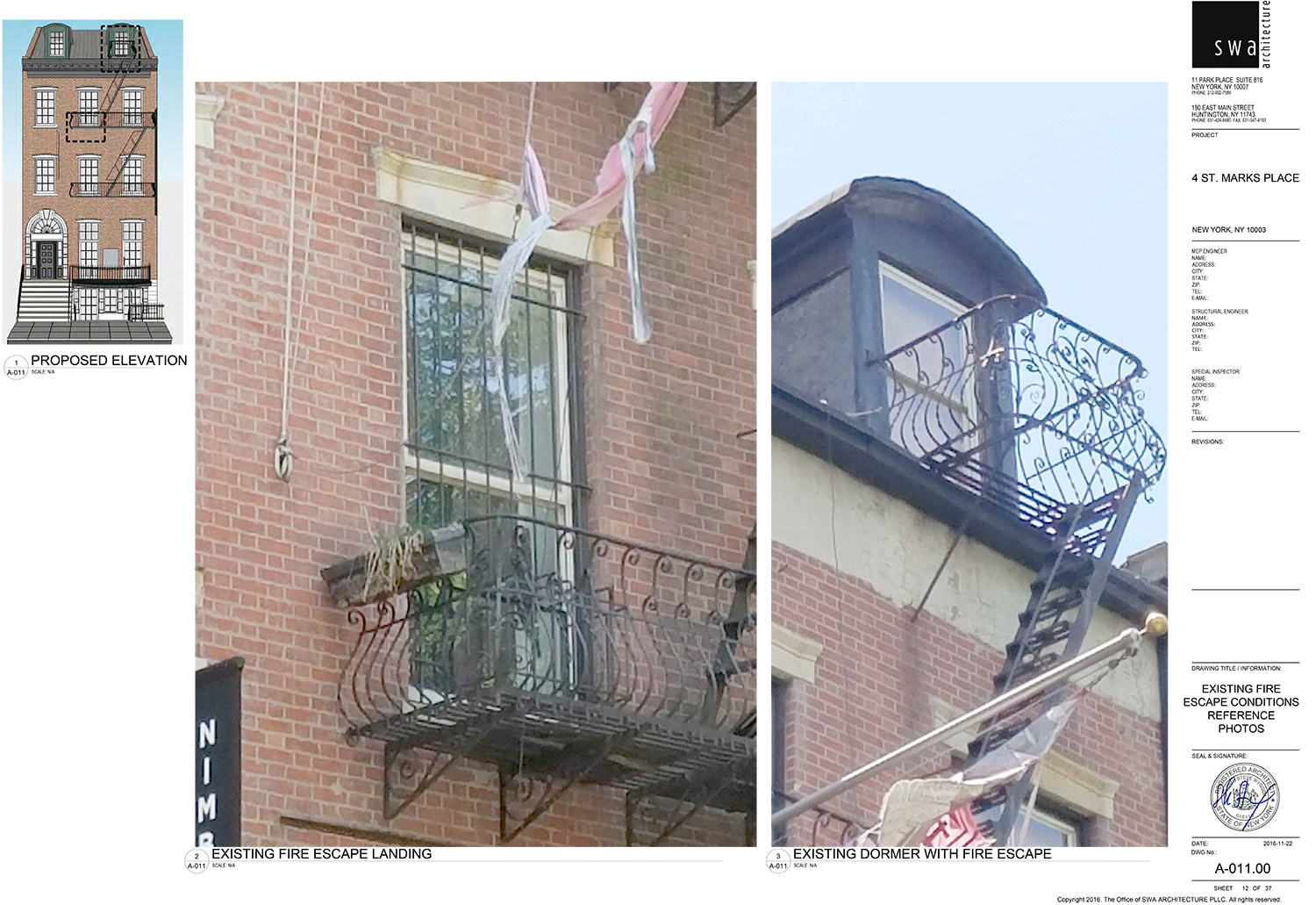
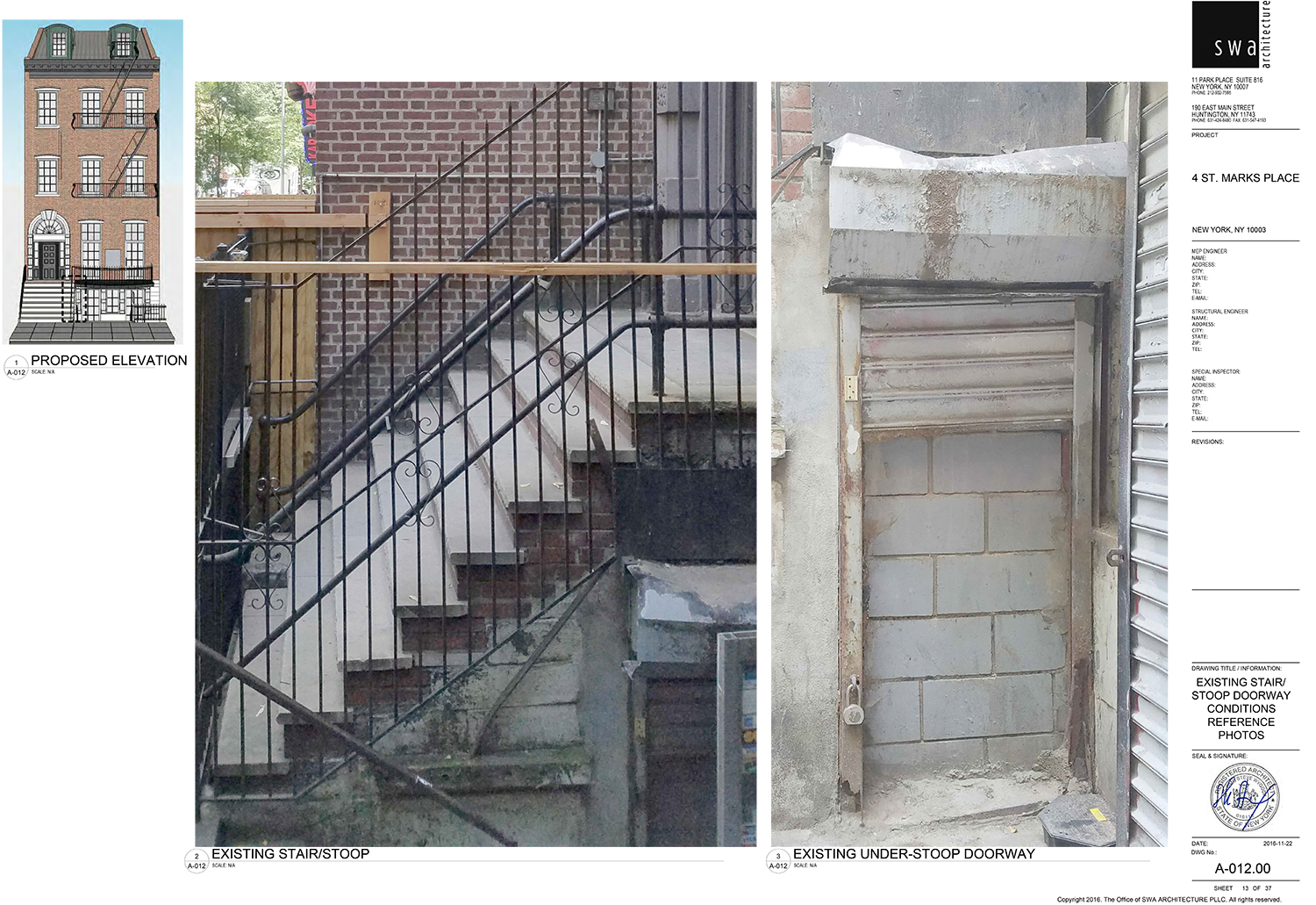
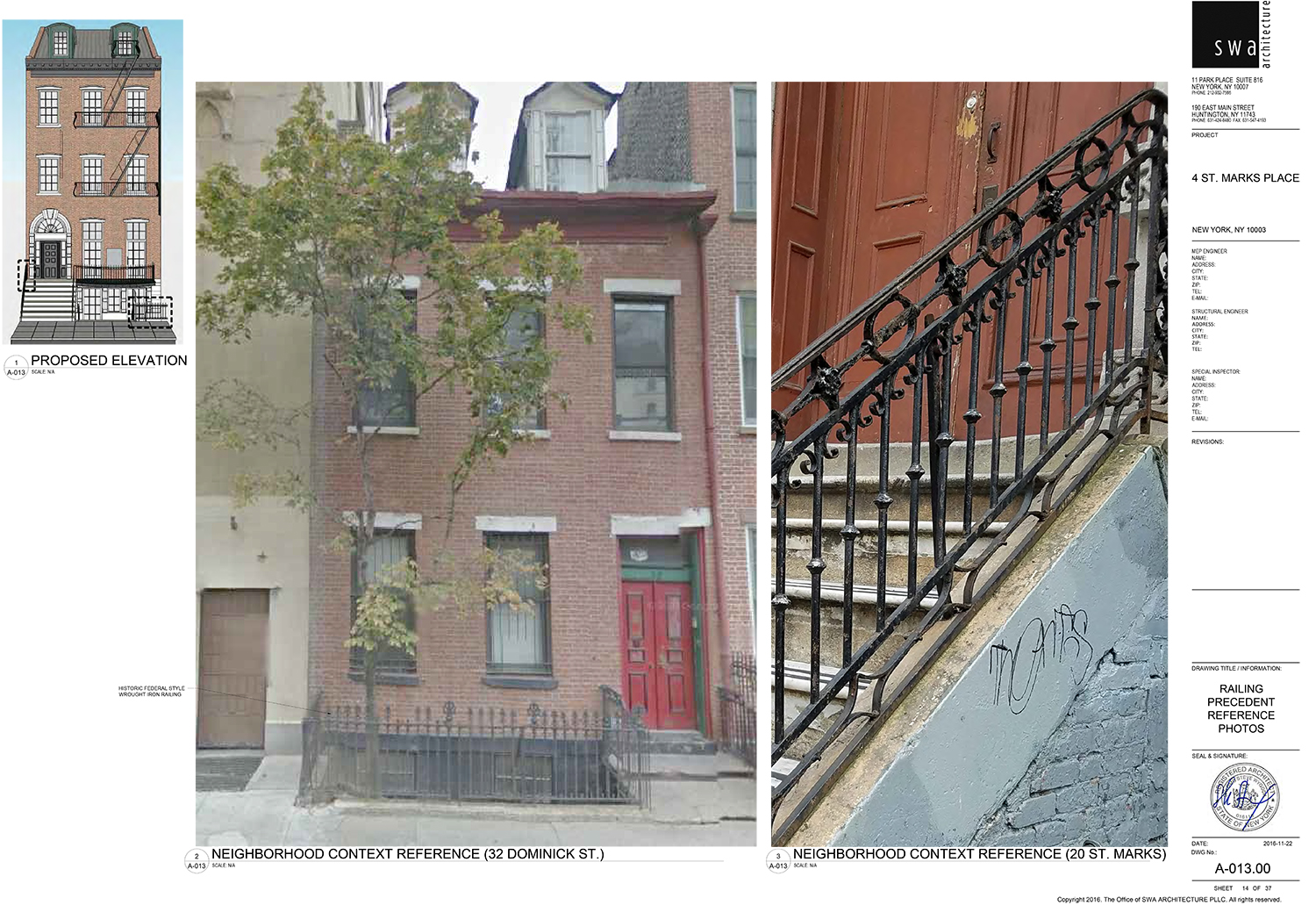
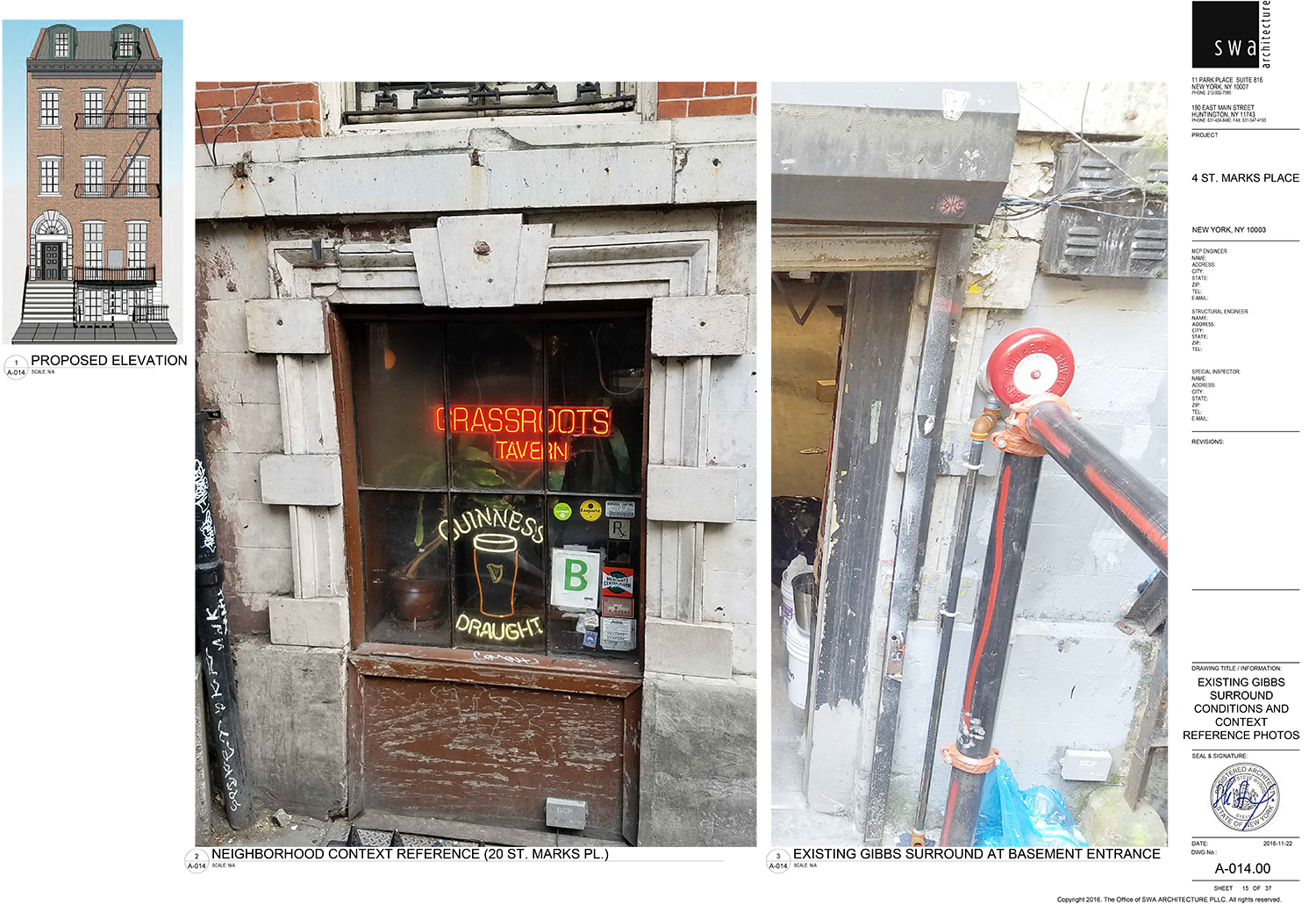
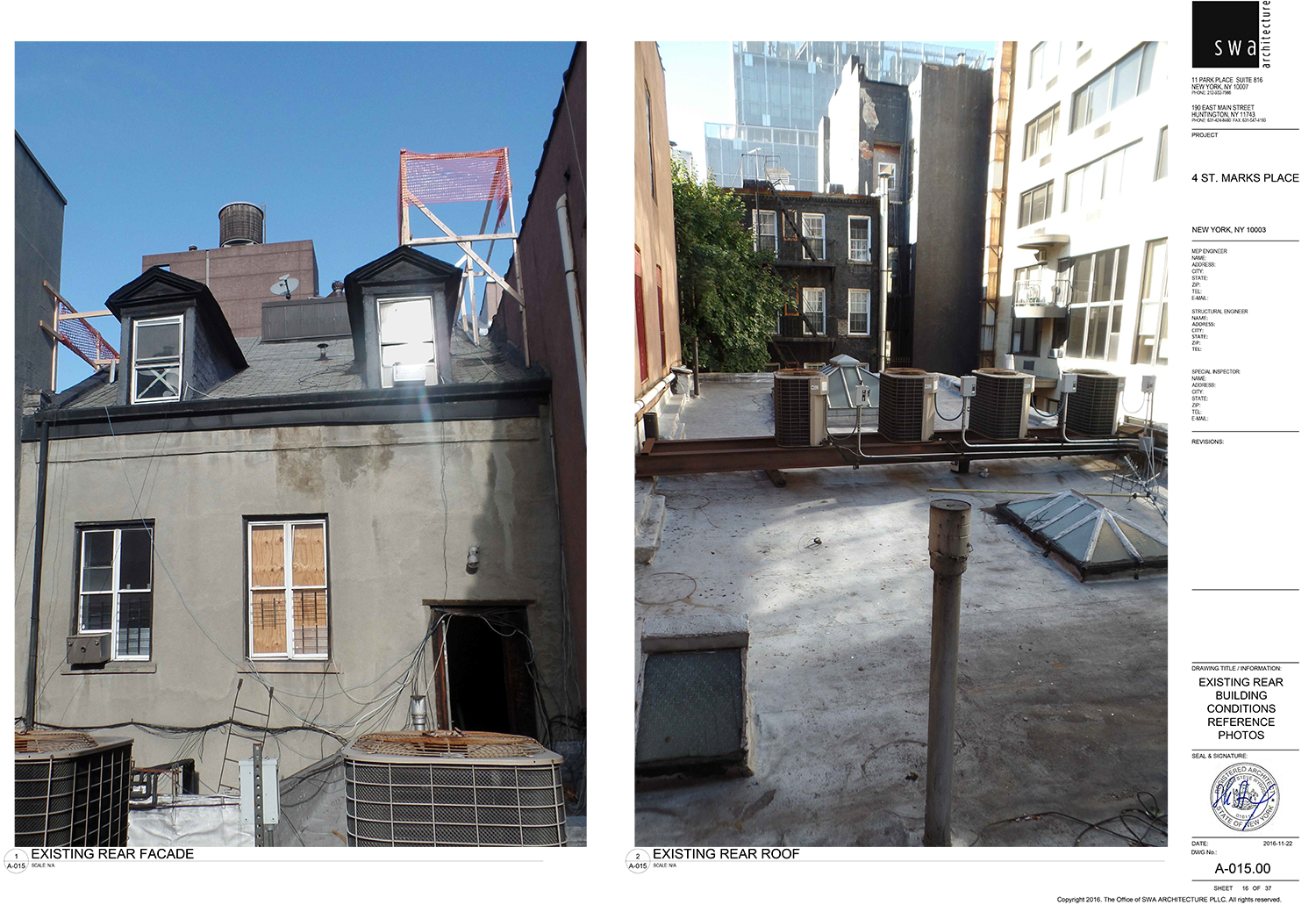

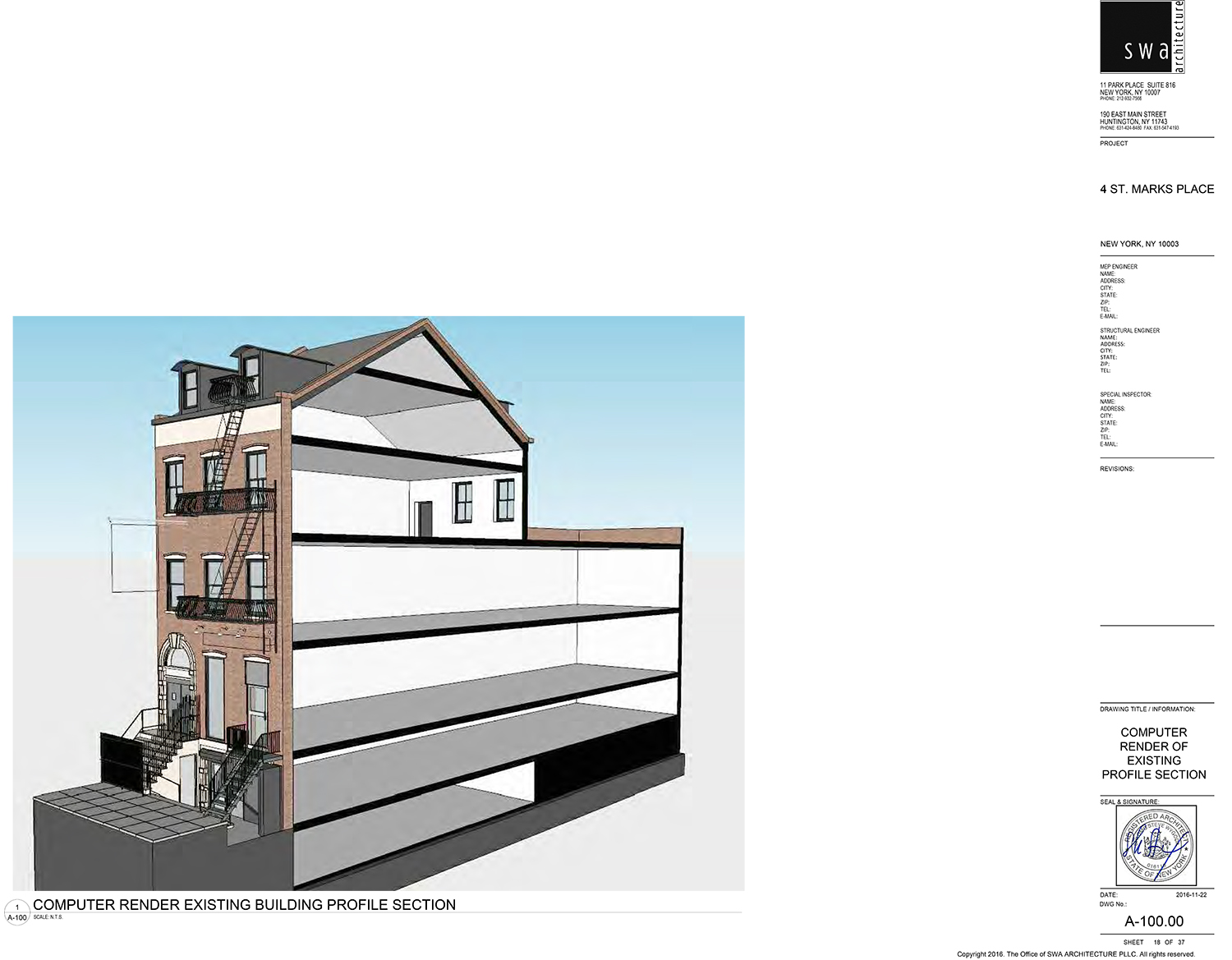
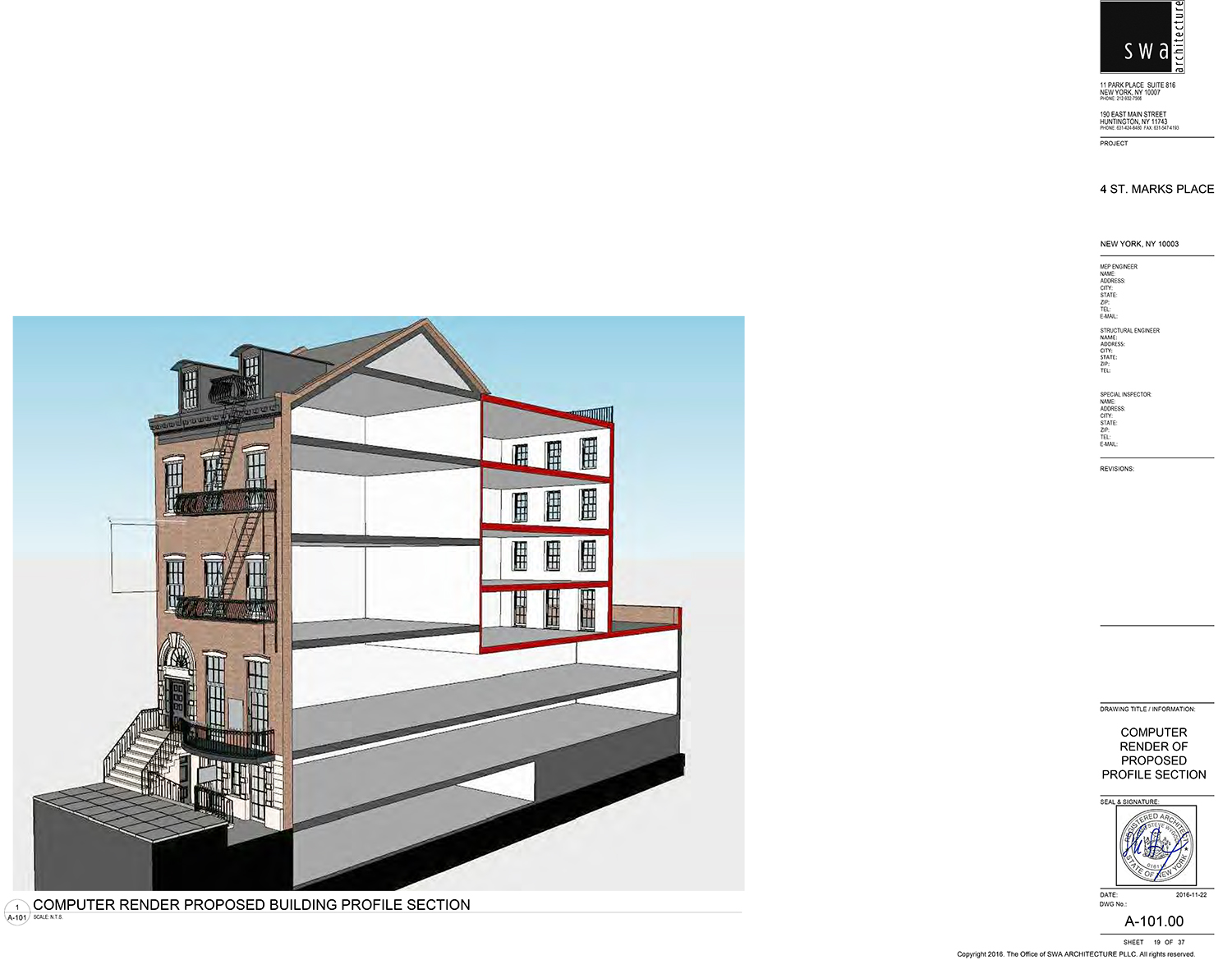
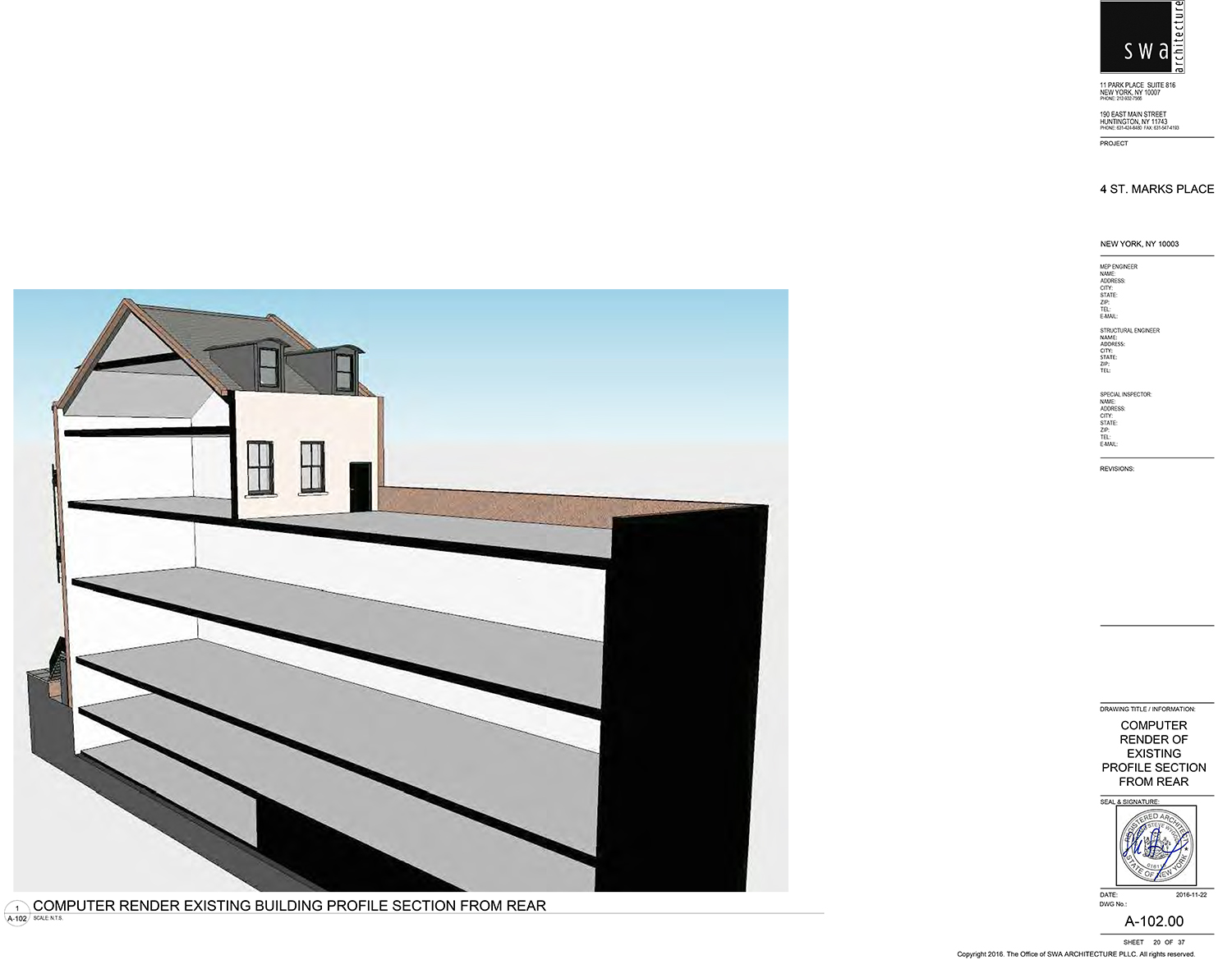
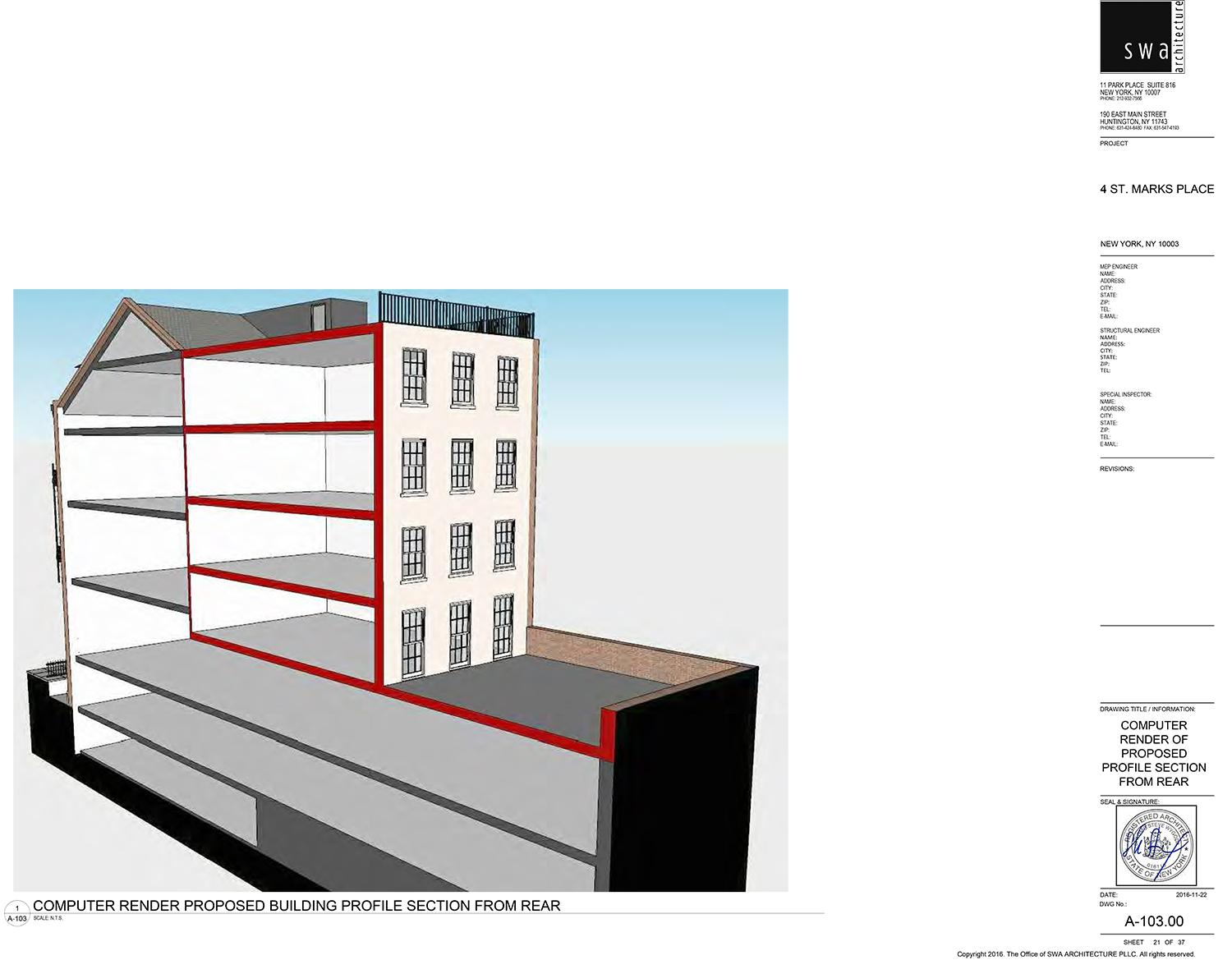
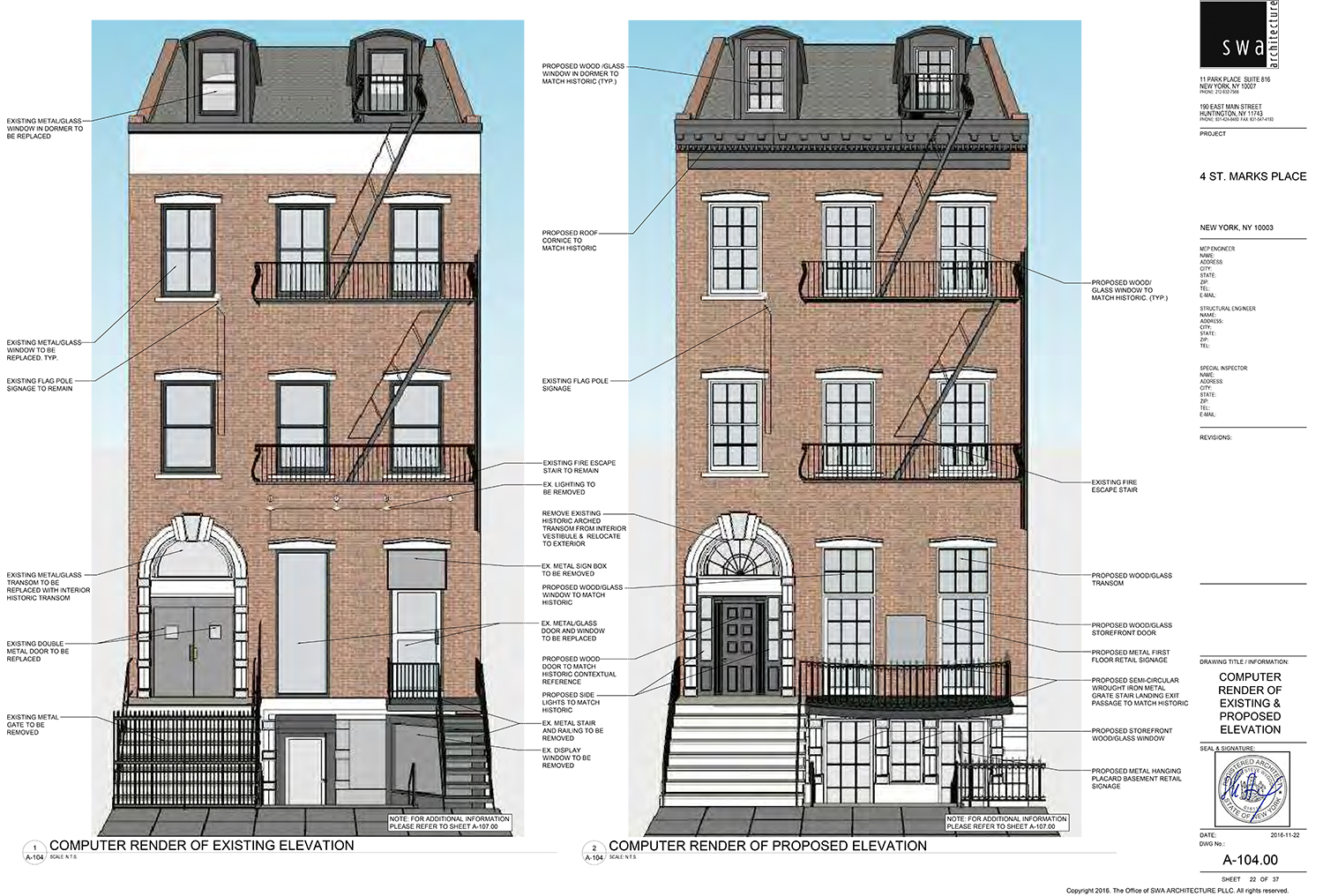

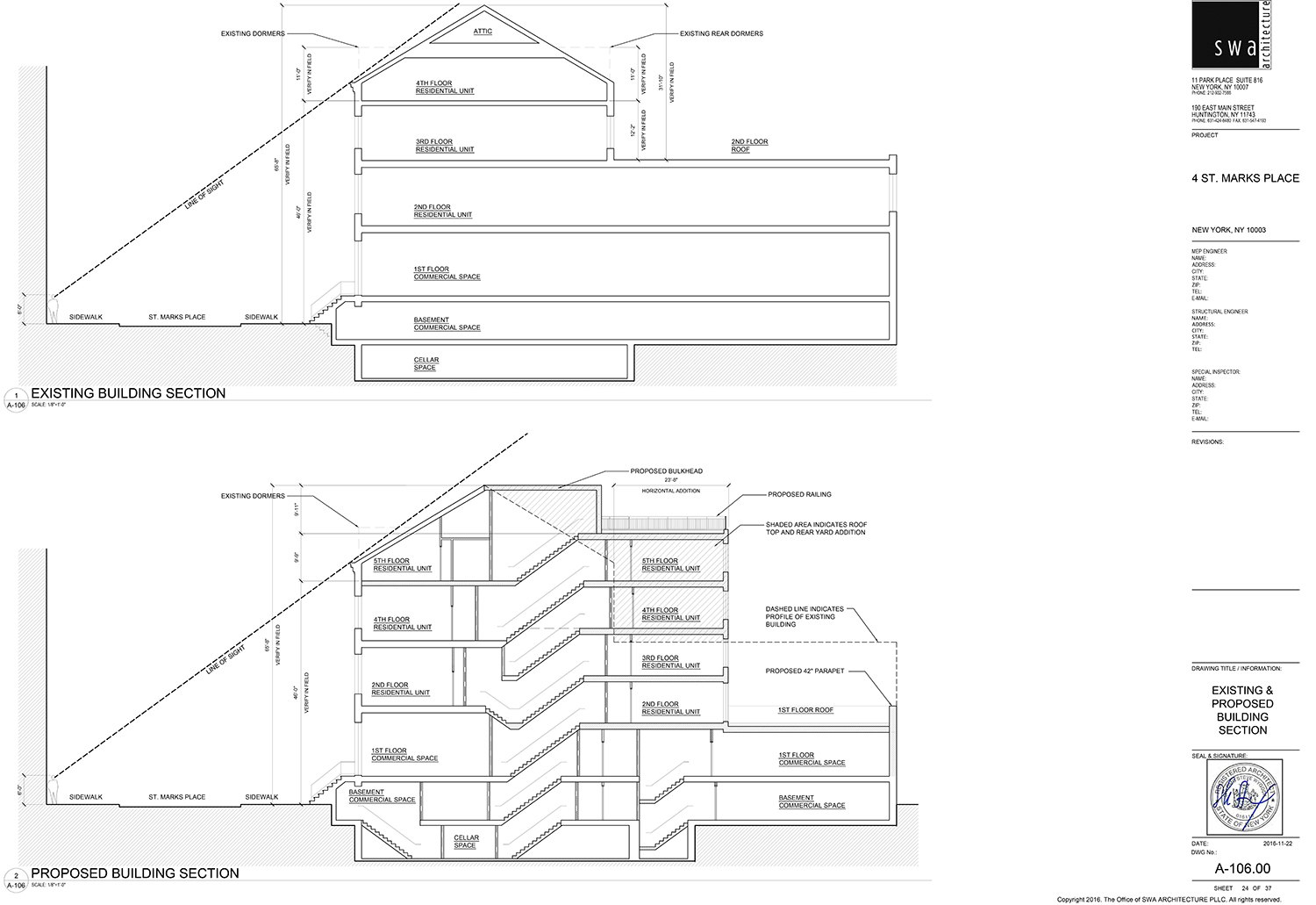
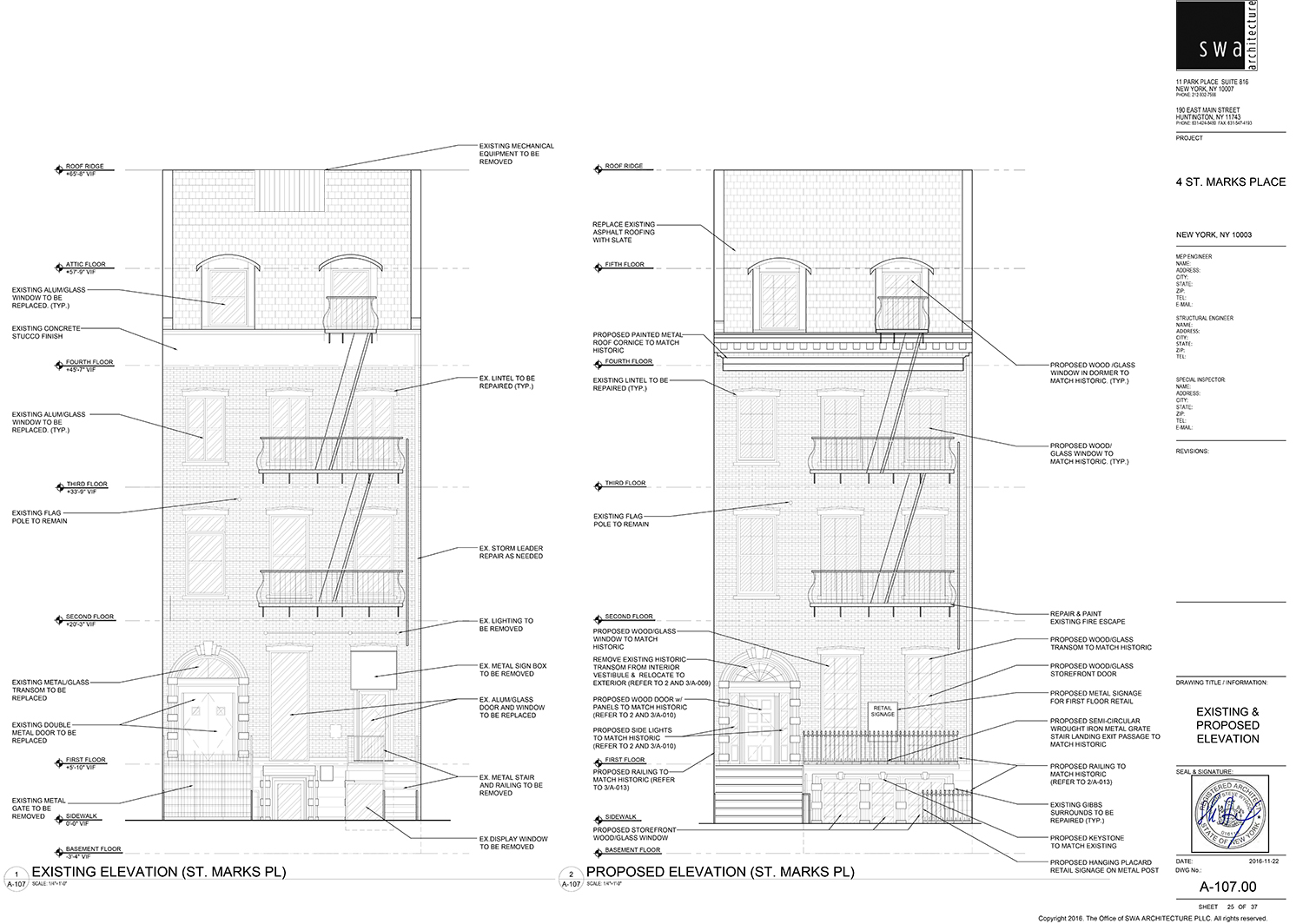
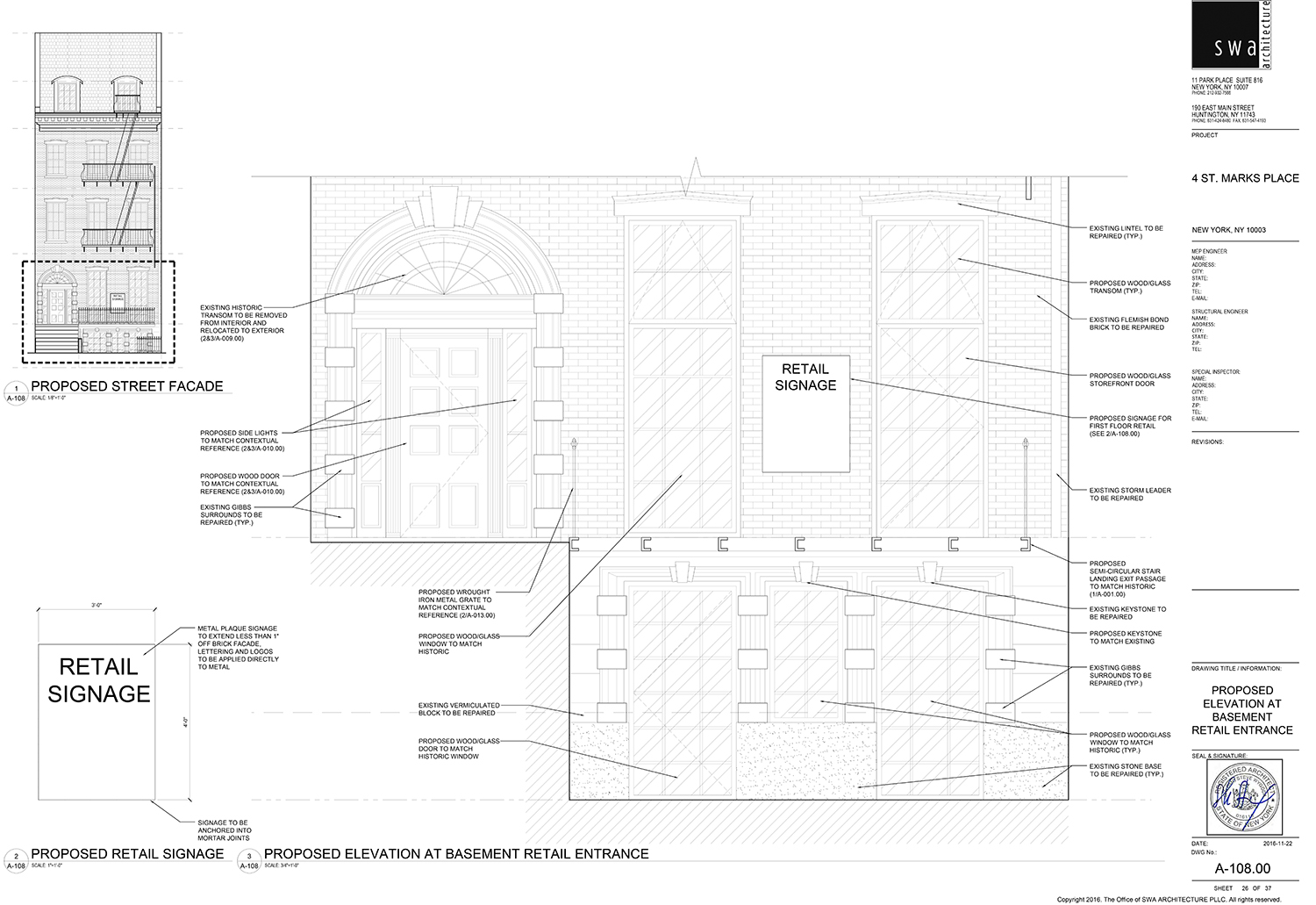
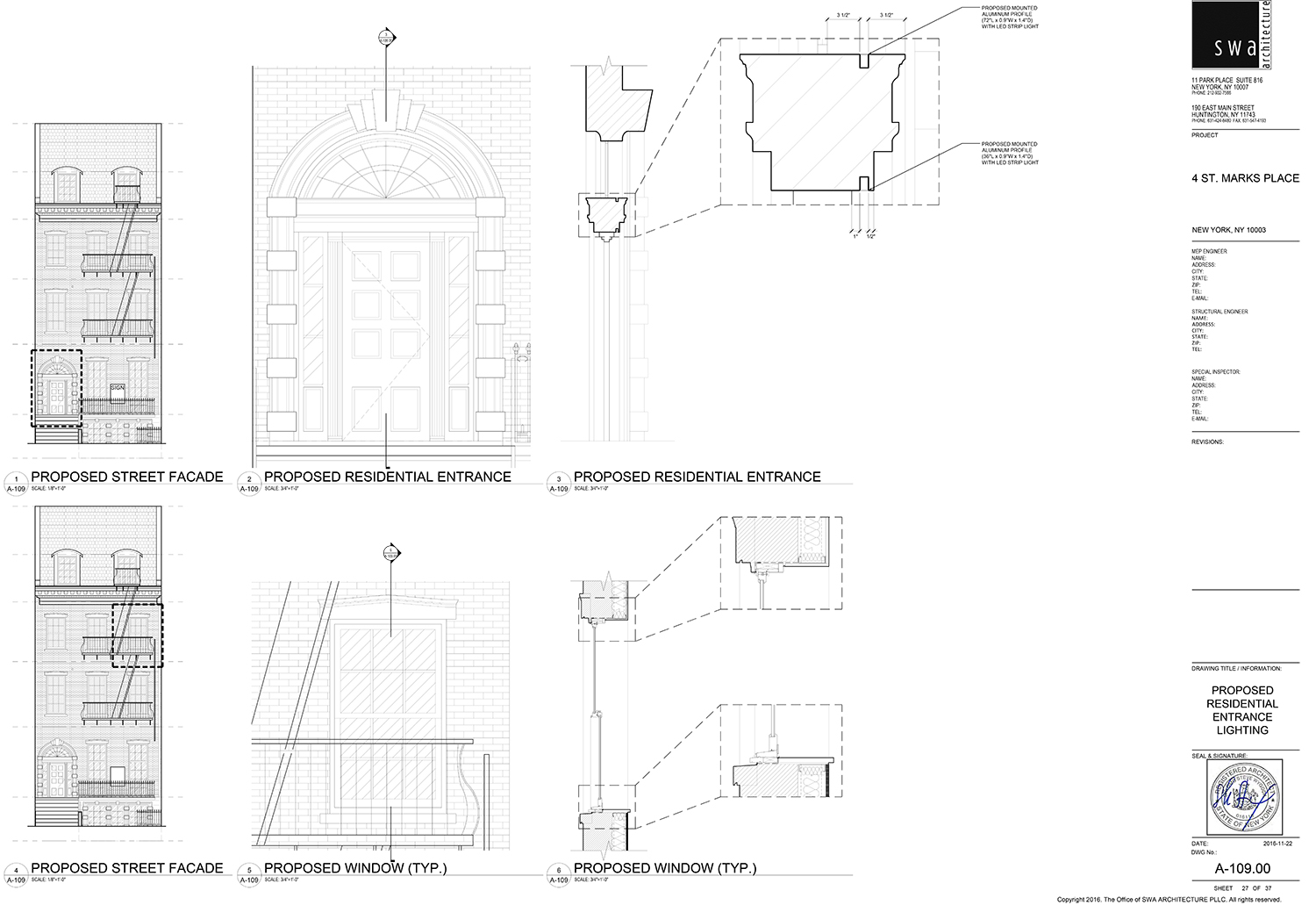

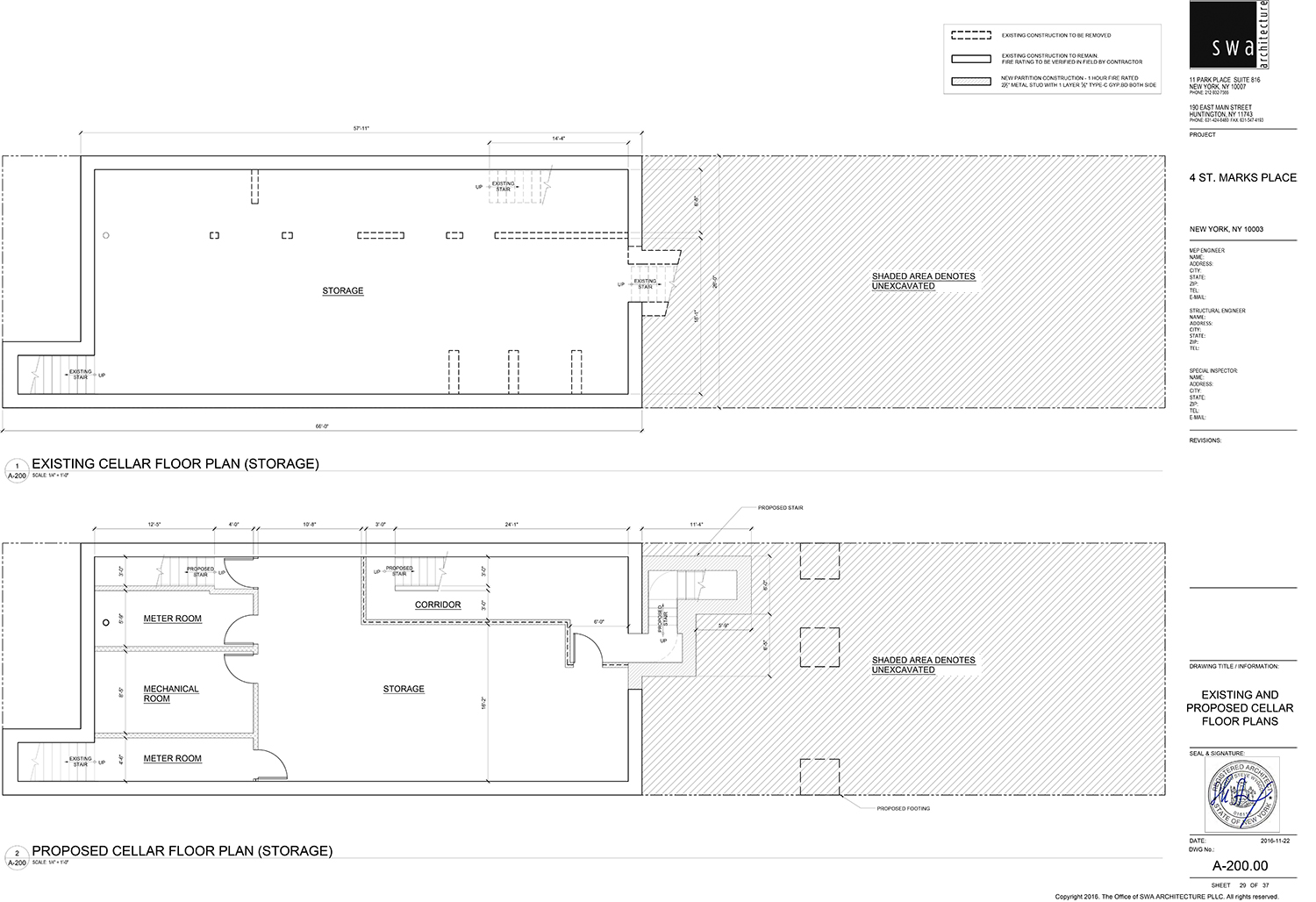
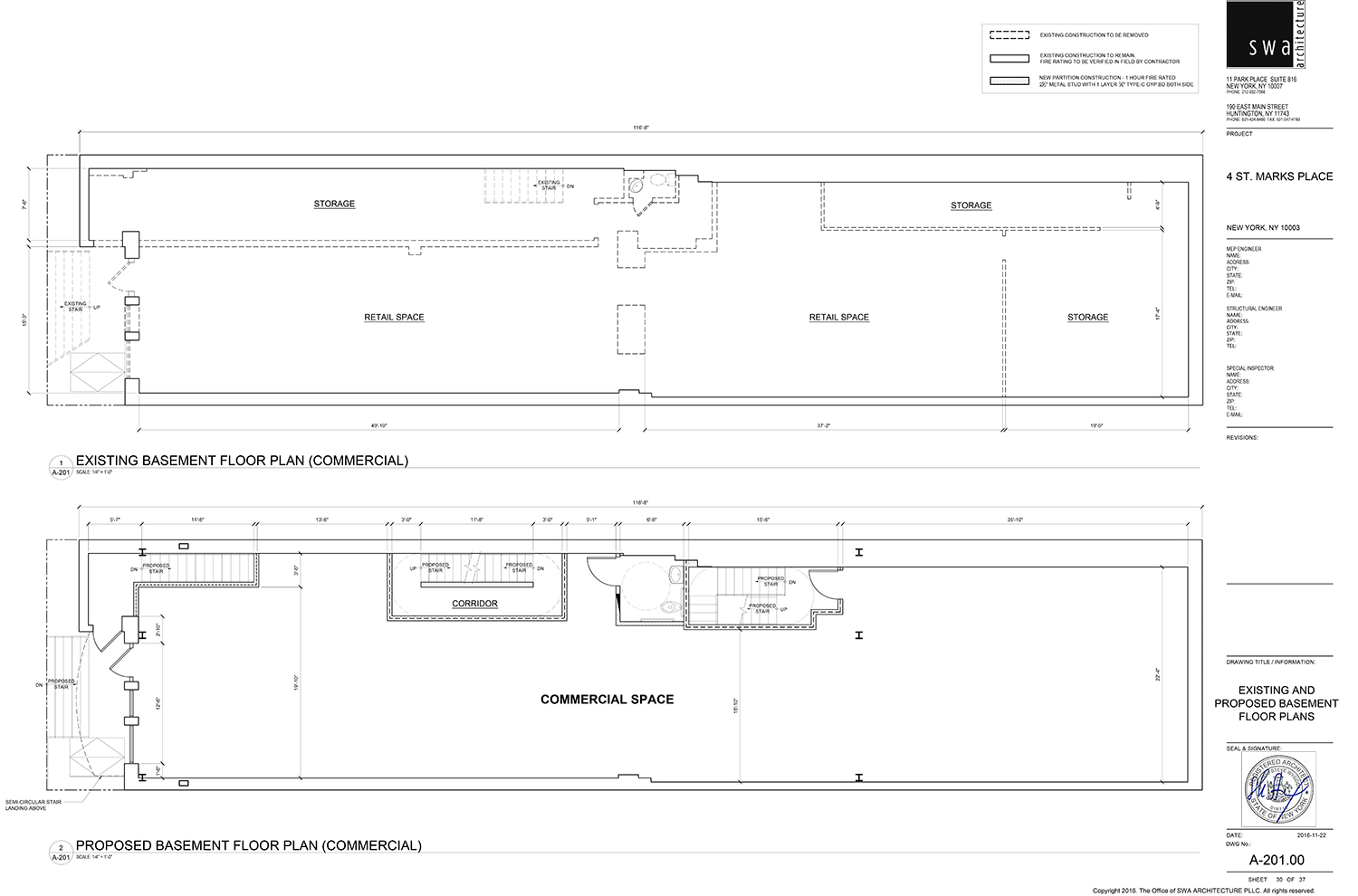
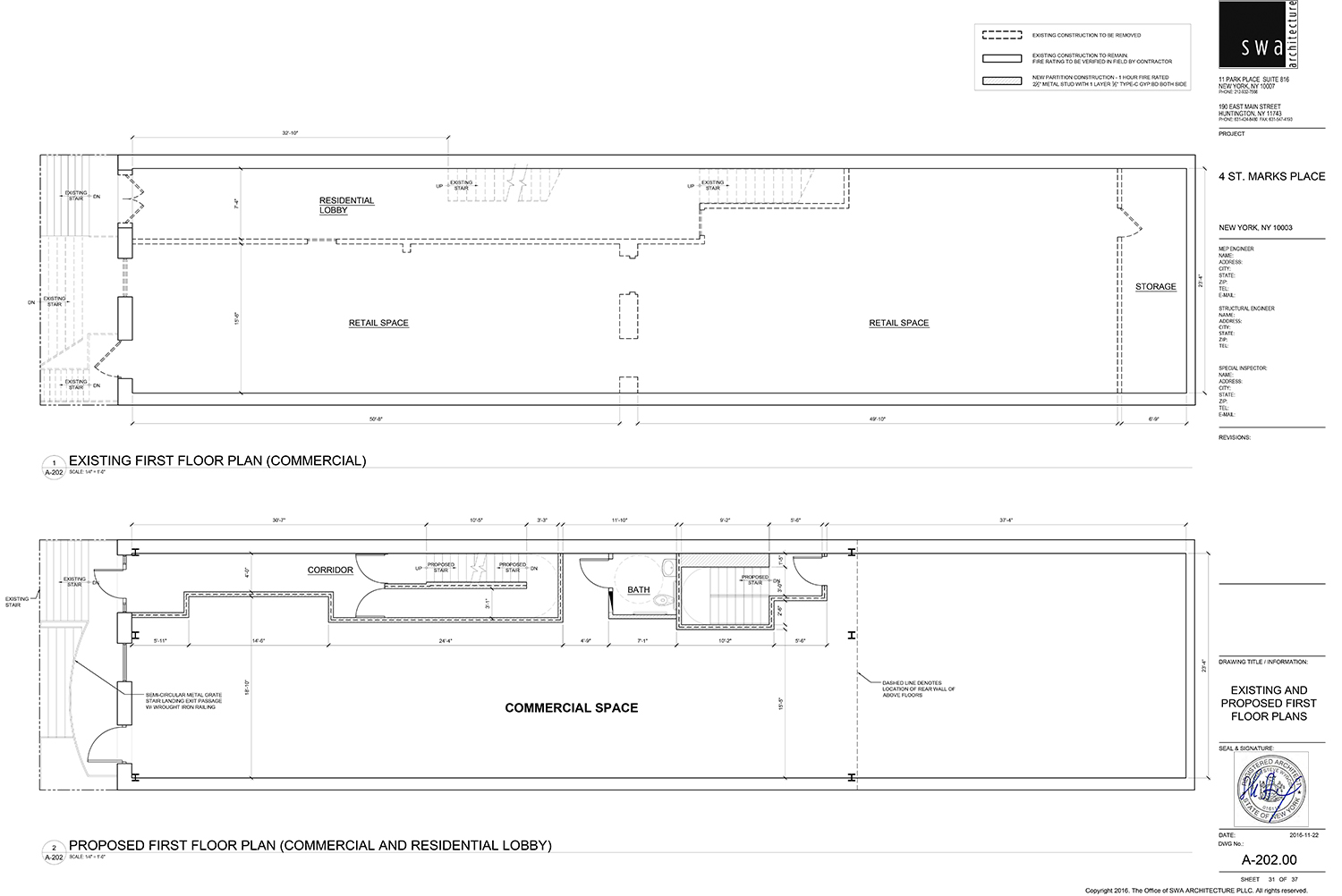
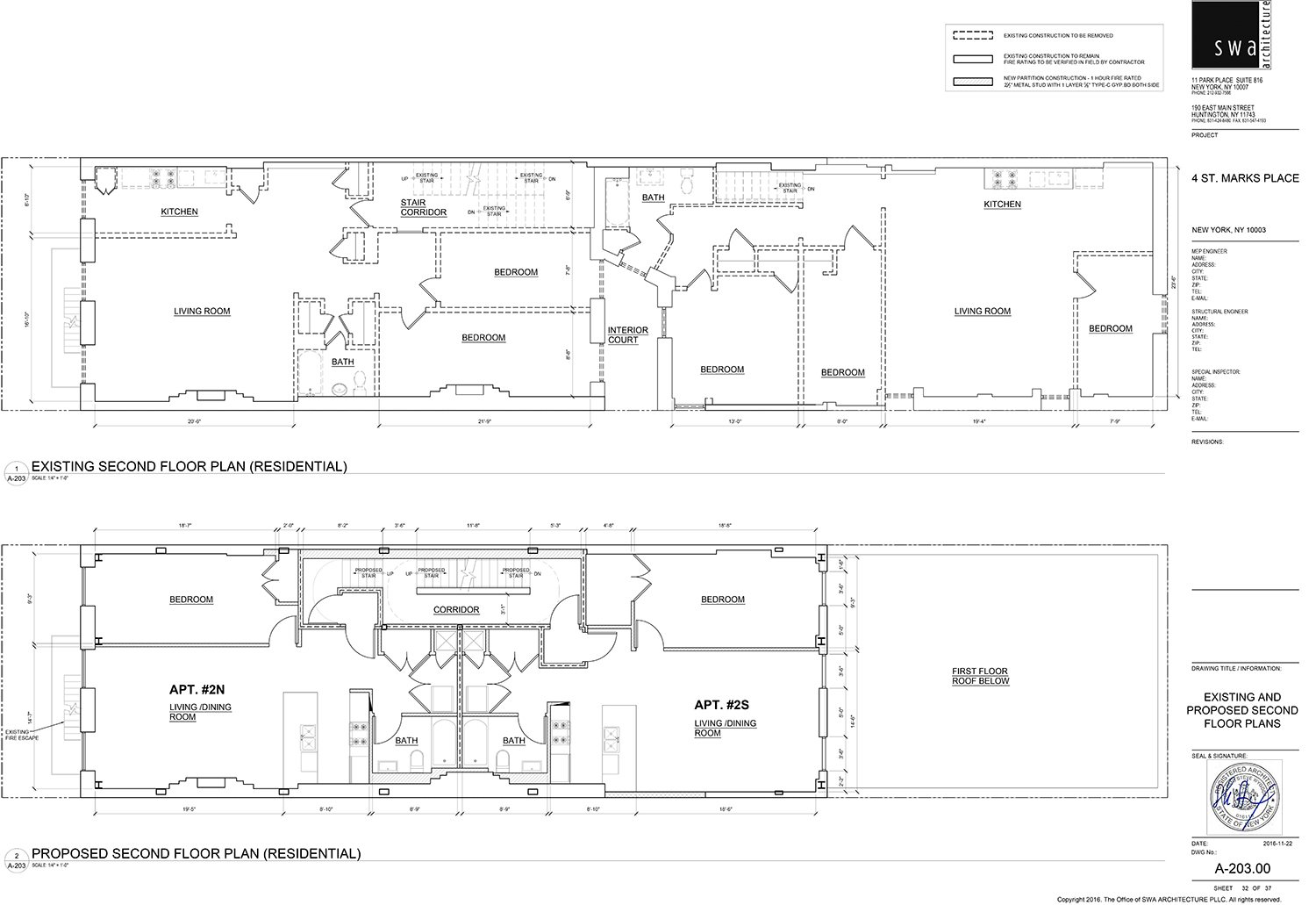
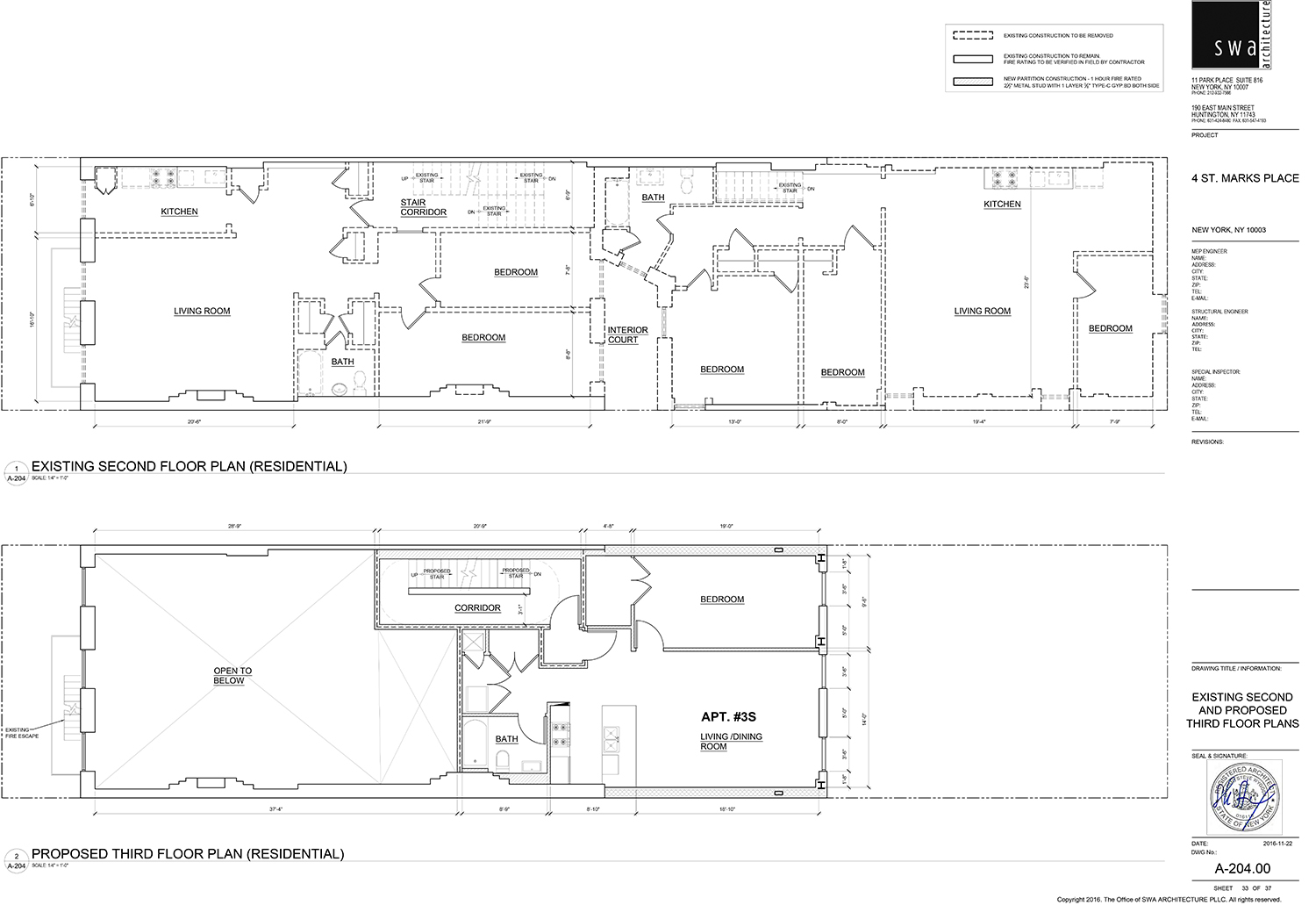
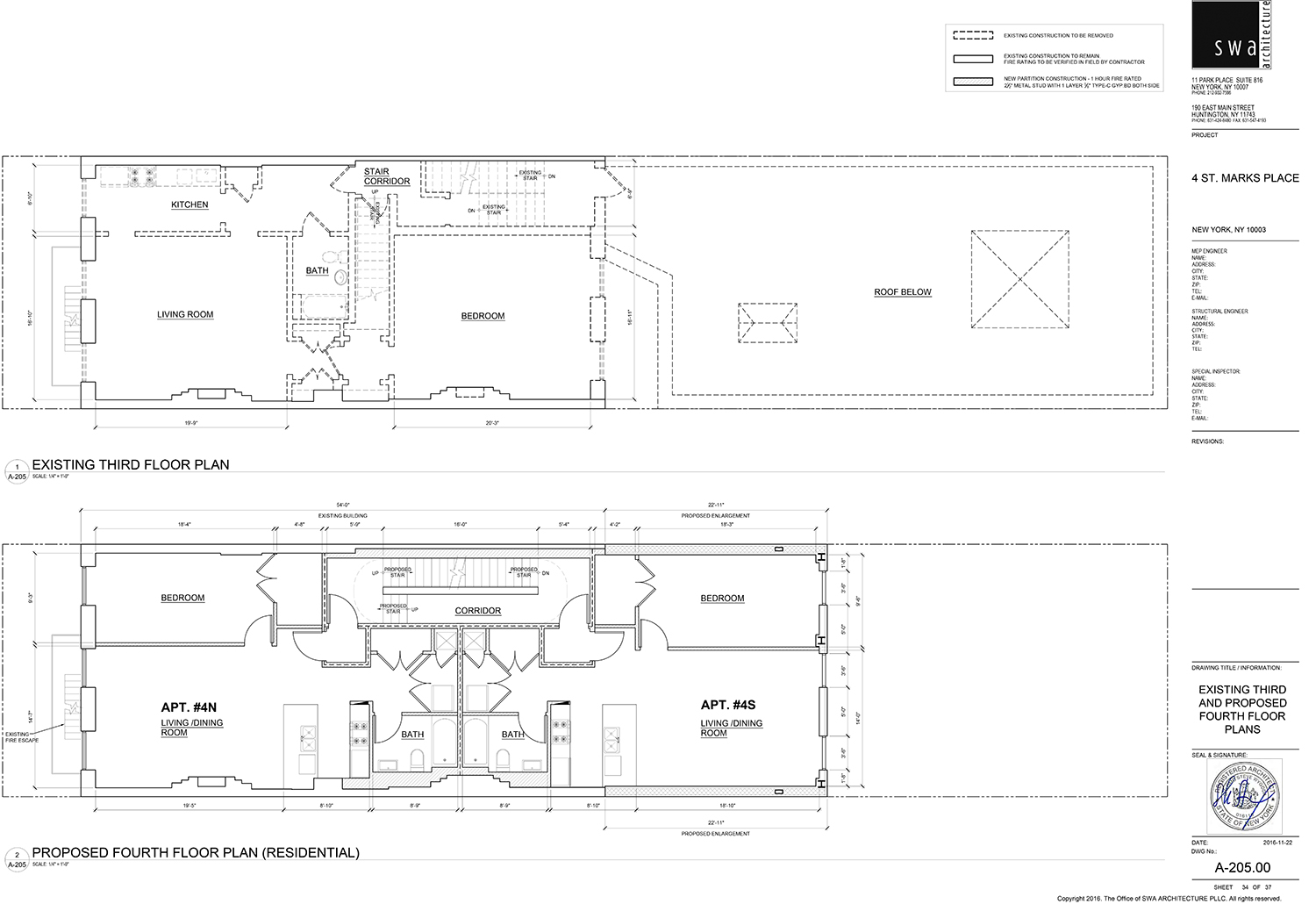

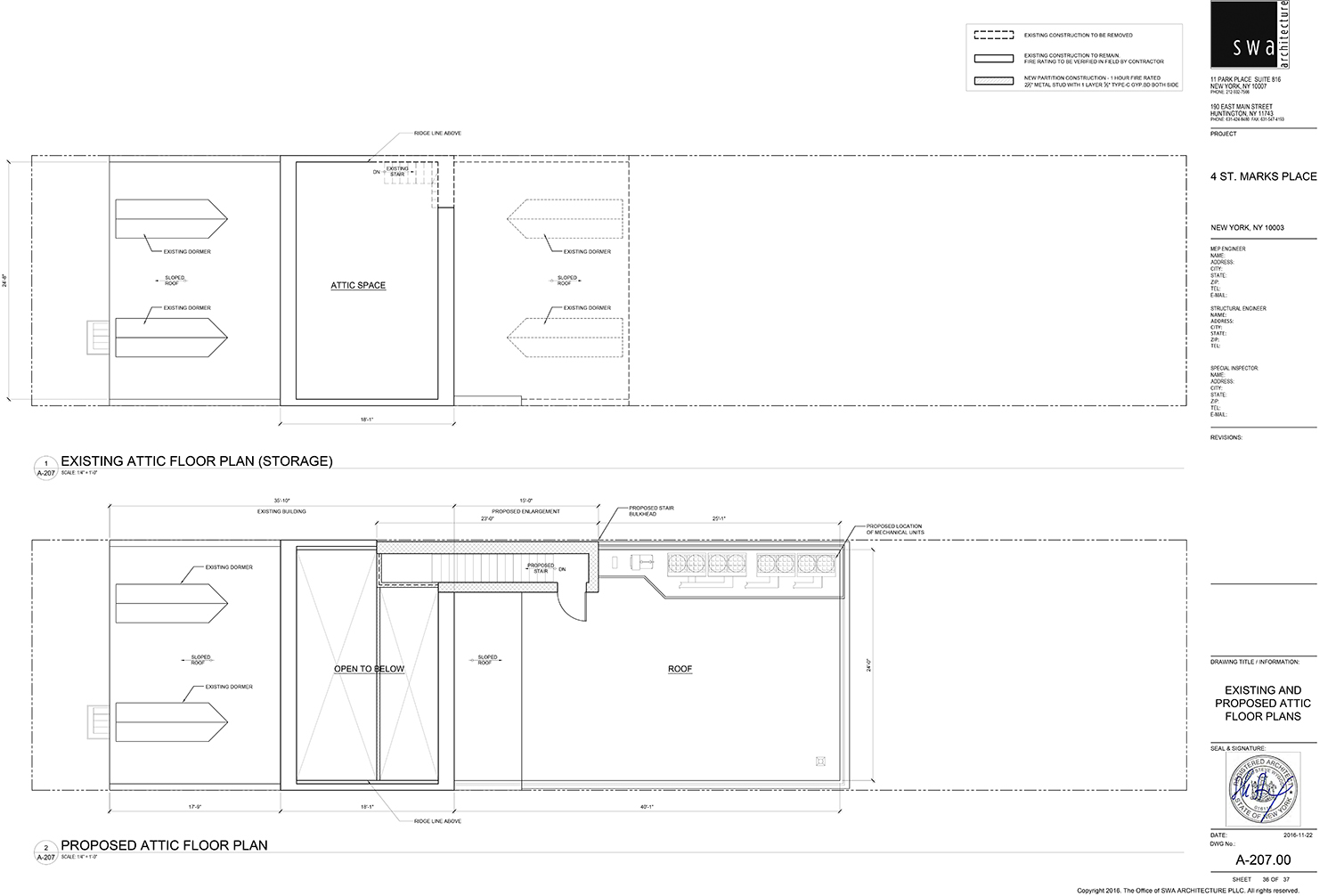


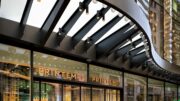


Operated the building to see section, and I agreed on proposed with door and window style. (I’m okay too)